
What Each Crew Position Wants You to Know
This article is a guide to show how small improvements can make a big difference for your fellow crew. Read on to learn what your crew wants you to remember each race!
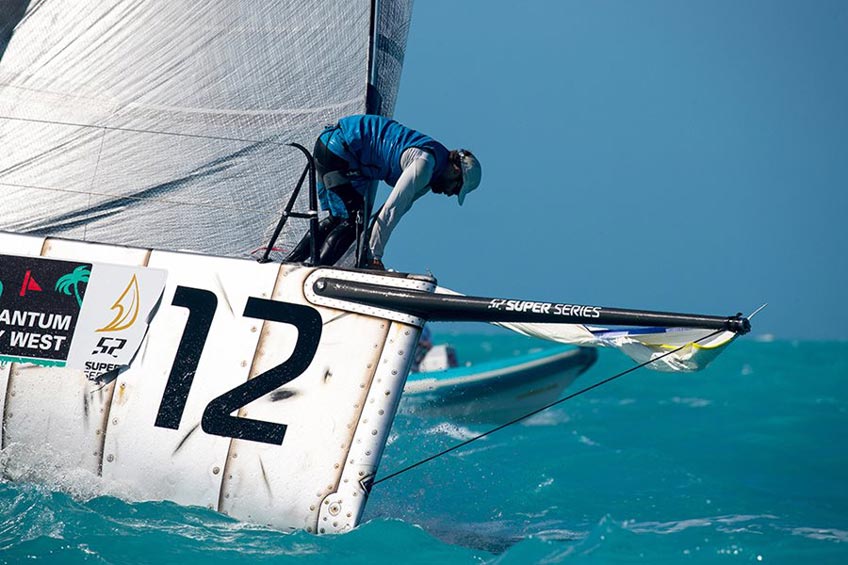
While it’s important to master your position on the boat, it’s equally as important to understand what’s going on in other domains and what you can do to make your teammates’ life easier and help the boat sail smoothly.
We reached out to a mix of successful sailors to find out what they want the other crew members to keep in mind to help them execute their job the best they can. Here’s what they had to say.
“The race is not over until the spinnaker comes down. It is easy to switch to recovery mode right after crossing the finish line, but this can be costly with a messy takedown, ripped or wet sail. To go along with this, after races finish send the jib bag up before the food bag! It’s frustrating for the bow when I’m are ready to flake the jib and everybody is eating.
I am happy to see the tactician’s general awareness of the bow team. We understand tacking mid jib-flake can’t always be avoided, but a quick cleanup with everyone cooperating makes life much easier. Lastly, my lifeline is the pit position, I like when this person is attentive and stays by their position until the bow team finishes cleaning up between races!” Anonymous bowman
“The mast is a lot easier when trimmers have patience on the set. They can pop the spinnaker open by sheeting too early and make the mast and foredeck look terrible! My key teammates are sewer and pit: a spinnaker set never works well if the trimmers, mast, sewer and pit are working independently, but when we hit on all cylinders, the set will be a thing of beauty. The other critical players to a happy mast are the tactician and helmsman. If the boat isn't in proper orientation to the wind when it is time to take the spinnaker down disaster can strike. A great bow/mast team will make it work, but a little waggle to help collapse the spinnaker goes a long way for a clean drop.” Andrew Spaulding*
“Be mindful of where things are thrown. For example: a jib change on the run, I may not be the one putting the old jib or bag down below, so I ask teammates to be mindful of the flaked kite halyard. I flake it once and then spend the rest of my run focusing on weight placement, pole position, finding the leeward marks and it becomes time consuming to have my head in the boat for longer than necessary.
The pit is in the middle of two groups. When it comes to maneuvers, the bow and brain trust may not always be on the same page, and I often have to decide which one to follow. If the back of the boat is calling for something that the bow is not ready to do; I can't force the issue. I can facilitate it, convey the sense of urgency, but I can't take the spinnaker down or jibe it by myself. This communication becomes easier if I receive clear and timely information from either end of the boat.” Scott Murin
Headsail Trimmer:
“Acknowledgment of communication. If I ask a teammate to do something, they should either act on it immediately or answer ‘copy’. If there is no acknowledgment, the person making the request often asks two or three times getting louder each time. I often see this situation and, my ultimate pet peeve is when the teammate finally answers and says ‘I HEARD YOU!’ When people say “copy” I can leave the task with them and move on. My other suggestion is to make habit of saying the person’s name before making a request so their attention is grabbed and time is not wasted by repeating what they didn’t hear before their name was called (this could be the difference between a collision and a race win).” Morgan Trubovich
“A briefing with the days goals. There should be a morning discussion describing the weather, potential courses, and anything else important. After the team is on the same page, people can break into groups depending on who they need to interact with throughout the day. I talk to my offside trimmer and grinders about what situations may come up and then I talk to the main trimmer about possible sails and boat settings.
It is also important to have quiet and calm maneuvers. I like to have ongoing discussions about what’s to come so when the boat is actually turning everyone has already anticipated their weight placement and I can focus on feeling the sheet run through my hands.” Dave Gerber
Main Trimmer:
“The most important thing is pressure calls and relatives. A main trimmer is ‘head in the boat’ which only gives them so much feel, so consistent and accurate information are crucial for boat speed. I am happy with simple dialogue with the tactician to know what modes are expected. If we develop standard steps, it becomes easy to be on same page.
The jib and main must also cooperate, they are constantly working together to make the boat do what the tactician wants. As a main trimmer, I let the jib do what they want and communicate when they are hitting the main or when they can be tighter. It’s good to develop concise key words and terminologies for any maneuver where the main has to be fine-tuned; some examples: high build, high kill, half tack, speed build, or racing.” Luke Lawrence
“I love it when new crew get onboard, listen to the race conversation and offer input where it might be lacking or where he/she can contribute value. For example, if no one is calling breeze on the rail, it’s great to have a crew take the initiative to make very concise and valuable breeze calls (Puff on in 3, 2, 1….). It’s also great when new crew take a few minutes to observe, listen and see what info or help might be needed instead of diving right in without first watching or thinking. It's valuable when a crew member offers input and "finishes the sentence." How many times have you heard someone say "...the right has a lot of pressure...." AND what??? Inquiring minds want to know. Finish the sentence: "... and they look strong/are headed/etc." Completing the sentence and picture for the tactician, driver and speed team is extremely helpful. A positive attitude and imploring the “5 second rule” (does what I’m about to say make sense and is it valuable? Am I finishing the sentence with my comment? ) make any crew a welcome addition to my boat." Ms. Sailsalot
“Come with a game face on. There is always time for bar talk, but it shouldn’t be before racing. I appreciate team members who get to the boat and prepare their position for racing. When people scatter and aren’t responsible for their area it takes away from what I need to be doing as a tactician and the performance suffers.” Geoff Ewenson
“Clear and short communication. I am happy when the trimmers and I are in sync with what steps we will take as conditions change. It is helpful for me to understand which way the trimmer is likely to move the leads, etc. as the breeze changes. For me, tactical input and observations are certainly invited before situations happen, especially 10 minutes before a start.” George Szabo
Boat Captain:
“Ask questions at the right time. I love when people want to learn and be involved with how the boat comes together, but choose a time when not much else is going on, probably not when I’ve just sat down to service a winch. I love it when each crew member takes responsibility for their station and addresses problems early, and to take it one step further if they are part of the solution whether it be a short term regatta fix or the long term ultimate fix, it’s fun to bounce ideas off others.
My life becomes easier when teammates self-delegate. I think of tasks as skilled and unskilled; if you are unsure how to help with the skilled boat work, there are always unskilled items that can be taken care of. Examples: filling water bottles, organizing down below, grabbing food and clean up. And if you still don’t know what to do, ask yourself, ‘If I were running this boat, what would I want done right now?’” Kyle Kant
*Editor’s Note: Shortly after publishing this piece, our team received the very sad news of Andrew Spaulding’s untimely passing. He was much loved by the sailing community and our team’s deepest sympathies go out to his friends, family and everyone who’s lives were touched by his wonderful spirit.
The Discussion

Us, too. We pour that passion into each of our newsletters to help you enjoy sailing even more.
- Learn to Sail
- Sailing News
- Submit News
- About MySail
- Find Yachts
- Find Events

- Yacht Racing
Get Your Race Crew Up-To-Speed; Tips, Tools & Resources

At the beginning of a new sailing season or when bringing new sailing crew into your team, it’s important to make sure everyone’s up to speed with how things work on your yacht, understands your processes and is confident to do their race position.
Crew Manual
A simple crew manual is a great way to share basic procedures, safety knowledge and boat rules with new crew before they arrive on race day.
Sharing some key information about your yacht with crew before they arrive increases their confidence and ability to be well-prepared on race day. It also means you won’t forget to share any important information during your busy pre-race preparations.
Click here to download our FREE editable Crew Manual template.
Position Playbook
A position playbook provides step-by-step instructions for all crew positions and each key manoeuvre on your yacht.
This is also a useful tool to send to new crew before they arrive for their first race or training day, so they can arrive already up-to-speed and ready to do their job.
A good exercise is to create your yacht’s playbook together as a team so everyone has a chance to talk through each step; this makes sure everyone is on the same page about how manoeuvres should be done. Keep this up-to-date and encourage your crew to review it periodically, especially at the start of a new sailing season or when you’ve had a lot of time away from the yacht.
Click here to download our FREE editable Position Playbook template.
Position Cards
Position cards can be a useful on-board tool, especially for less experienced crew.
These are small, pocket-sized cards that contain step-by-step instructions for key manoeuvres on the yacht, for each position. They can be printed and laminated or printed on waterproof material so crew can keep their position cards with them for a handy reference.
Need to reef the main but haven’t done it for a while? A quick check of your position card will show you the steps for your position. Having position cards on-hand can help crew quickly check their steps and avoid mistakes, especially for manoeuvres that are not done often.
Nothing beats on-water training and experience for improving you crew’s performance and confidence.
Plan specific training days into your schedule, especially at the beginning of the sailing season, to get crew together and make sure everyone is confident in their position. If you find it hard to organise training-specific days, try heading out on the water an hour or more before race start to get in a few training runs, or stay out after the race has finished to practice any manoeuvres that may need a little work.
To get the most out of your training, make a training plan and set objectives for each training session. It’s best to focus on practicing and improving a few things each session, instead of trying to do everything.
Before you start, talk through the plan and objectives for the day with your crew. Before doing each manoeuvre, talk through the steps or what you’re trying to achieve, and repeat it several times until everyone feels very confident in what needs to be done. Afterwards, talk about what went well and what could be improved.
After your training session, you’ll want to do a de-brief, just as you would after a race.
Click here to download our FREE editable Training Plan template.
Cross-train Crew
As well as training in their regular positions, getting crew to cross-train in positions they don’t normally do has several benefits:
- It provides opportunities for crew to keep learning, keeping them engaged and interested in sailing on your yacht;
- It helps crew understand the different positions, and how what they do in their position effects other areas of the yacht;
- If someone is sick or can’t make race day, cross-training crew means you’ll have a pool of possible people who can fill different positions within your yacht, allowing you to reshuffle crew as needed.
Your Crew Manual, Position Playbook, Position Cards and regular training will all help cross-train crew to be capable and confident to do any position on the yacht.
How do you get your crew up to speed? Comment with your ideas or stories.
RELATED ARTICLES MORE FROM AUTHOR
Improve your performance with a race log for your yacht, why a crew debrief should be part of your post-race program, the perfect pre-race brief, checklist: prepare for race day, 5 tips to perfect race communications on your yacht, infographic: sailing in windy conditions.

POPULAR POSTS
Cyca storms the national sailing league on day two, mysail – now serving sailors and skippers in new zealand, national sailing league makes its australian debut, popular category.
- Sailing News 540
- MySail News & Updates 123
- Newsletter 94
- Yacht Racing 30
- Learn to Sail 18
- Sailor News & Stories 15
- Safety on Water 10
- Clubs & Associations 3
- Volunteering 2
- Privacy Policy
- Terms of Use
10 Tips to Improve your Race Tactics
The role of crew positions and duties on a sailboat
Discover the key crew positions and their duties on a sailboat to ensure a safe and enjoyable journey exploring the open sea with your family.
The Role of Crew Positions and Duties on a Sailboat
Sailing is an exciting and fulfilling way to explore the world with your family, but it’s also a complex endeavor that requires a solid understanding of various crew positions and duties. In this article, we’ll delve into the different roles on a sailboat, their responsibilities, and how they contribute to a successful sailing adventure.
Table of Contents
Introduction, watch leader, galley crew, communications officer.
Before we dive into the specific crew positions, it’s important to note that the size and complexity of your sailboat will determine the number of crew members needed. On a smaller boat, one person may take on multiple roles, while larger boats may require a full crew to operate efficiently. Regardless of your boat’s size, understanding the various roles and their duties will help ensure a safe and enjoyable sailing experience.
The skipper, also known as the captain, is the person in charge of the sailboat. They are responsible for the overall safety and well-being of the crew and the vessel. The skipper’s duties include:
- Planning and executing the sailing itinerary
- Ensuring the boat is properly maintained and equipped
- Making decisions regarding navigation, weather, and safety
- Managing the crew and assigning tasks
- Ensuring all crew members are trained and competent in their roles
- Handling emergencies and making critical decisions under pressure
The skipper should have extensive sailing experience, strong leadership skills, and a thorough understanding of the boat’s systems and capabilities.
The first mate, or mate, is the skipper’s right-hand person and is responsible for assisting with the management of the boat and crew. The first mate’s duties include:
- Assisting the skipper with navigation, weather, and safety decisions
- Supervising and directing the crew in their tasks
- Stepping in as skipper if the skipper is incapacitated or unavailable
The first mate should have strong sailing skills, good communication and leadership abilities, and a solid understanding of the boat’s systems and capabilities.
The navigator is responsible for planning and executing the boat’s course, taking into account factors such as weather, currents, and hazards. The navigator’s duties include:
- Creating and updating the boat’s passage plan
- Monitoring the boat’s position and progress using charts, GPS, and other navigational tools
- Identifying and avoiding potential hazards, such as reefs, shoals, and shipping traffic
- Communicating with the skipper and crew regarding the boat’s course and any necessary adjustments
The navigator should have strong navigational skills, a keen eye for detail, and the ability to think critically and make decisions under pressure.
On longer passages, the crew will typically be divided into watches, with each watch responsible for sailing the boat for a set period of time. The watch leader is responsible for overseeing their watch and ensuring the boat is sailed safely and efficiently. The watch leader’s duties include:
- Ensuring the crew on watch is performing their tasks correctly and efficiently
- Monitoring the boat’s course, speed, and sail trim
- Communicating with the skipper and other watch leaders regarding the boat’s progress and any issues that arise
- Ensuring the crew on watch is well-rested and alert
The watch leader should have strong sailing skills, good communication and leadership abilities, and the ability to make decisions under pressure.
The helm, or helmsperson, is responsible for steering the boat and maintaining its course. The helm’s duties include:
- Steering the boat according to the navigator’s instructions
- Monitoring the boat’s speed and adjusting the sails as needed to maintain optimal performance
- Communicating with the crew regarding sail trim and other adjustments
- Keeping a lookout for potential hazards and other vessels
The helm should have strong sailing skills, good communication abilities, and a keen sense of awareness.
Deckhands are responsible for handling the sails, lines, and other equipment on the boat. Deckhand duties include:
- Hoisting, lowering, and trimming sails
- Tying and adjusting lines, such as halyards, sheets, and dock lines
- Assisting with anchoring and mooring the boat
- Performing routine maintenance tasks, such as cleaning and inspecting the rigging
Deckhands should have a basic understanding of sailing and be able to follow instructions and work well as part of a team.
The galley crew is responsible for preparing meals and maintaining the cleanliness and organization of the boat’s galley (kitchen). Galley crew duties include:
- Planning and preparing meals for the crew
- Ensuring the galley is clean and well-stocked
- Managing food storage and waste disposal
- Assisting with other tasks as needed, such as cleaning and maintenance
Galley crew members should have good cooking skills, be well-organized, and able to work efficiently in a small space.
The engineer is responsible for maintaining and repairing the boat’s mechanical, electrical, and plumbing systems. Engineer duties include:
- Performing routine maintenance on the engine, generator, and other systems
- Diagnosing and repairing mechanical, electrical, and plumbing issues
- Ensuring the boat’s systems are operating efficiently and safely
- Assisting with other tasks as needed, such as sail handling and deck work
The engineer should have a strong technical background, good problem-solving skills, and a thorough understanding of the boat’s systems.
The communications officer is responsible for managing the boat’s communication systems, including radios, satellite phones, and internet access. Communications officer duties include:
- Monitoring and operating the boat’s communication systems
- Ensuring the crew is aware of and follows proper communication protocols
- Communicating with other vessels, marinas, and authorities as needed
- Assisting with navigation and weather information
The communications officer should have a strong understanding of communication systems and protocols, good communication skills, and the ability to think critically and make decisions under pressure.
Understanding the various crew positions and their duties is essential for a successful sailing adventure. Whether you’re sailing with a full crew or taking on multiple roles yourself, being well-versed in these responsibilities will help ensure a safe and enjoyable journey for you and your family. As you gain experience and confidence in your sailing abilities, you’ll be better equipped to handle the challenges and rewards that come with living the sailing lifestyle.
The Worldwide Leader in Sailmaking
- Sail Care & Repair
- Sailing Gear
- Sail Finder
- Custom Sails
- One Design Sails
- Flying Sails
- New Sail Quote
- 3Di Technology
- Helix Technology
- Sail Design
- NPL RENEW Sustainable Sailcloth
- Sailcloth & Material Guide
- Polo Shirts
- Sweaters & Cardigans
- Sweatshirts & Hoodies
- Accessories
- Mid & Baselayers
- Deckwear & Footwear
- Luggage & Accessories
- Spring Summer '24
- Sailor Jackets
- NS x Slowear
- Sailor Jacket
- Sustainability
- North Sails Blog
- Sail Like A Girl
- Icon Sailor Jacket
- Our Locations
- North SUP Boards
- North Foils
- North Kiteboarding
- North Windsurfing
SAIL FINDER
SAILING GEAR
COLLECTIONS & COLLAB
COLLECTIONS
WE ARE NORTH SAILS
ACTION SPORTS
Popular Search Terms
Collections
Sorry, no results for ""
Organize Your Crew
If you want to drive the boat, trim the sails, watch the instruments, read the compass, track the fleet, and call tactics—then race singlehanded. If you want to race with a crew, a careful division of responsibilities is the only way to succeed against other well-balanced teams.
There are three basic building blocks of a successful race pyramid: boathandling, boat speed, and tactics. Your crew must be organized so each block gets the attention required. A crew boss is needed to orchestrate boat handling. Sail trimmers and a driver are needed to focus on boat speed, and a tactician is needed to manage the course.
As soon as you have more than one person on the boat it is time to divide up the chores. On championship two-person boats, the driver drives and the crew does tactics. On a three-person crew, the forward crew and driver focus on trim, while the middle crew handles tactics.
Crew assignments should be based on the number, skill, experience, and interest of your crew. Each crew position should have clearly defined responsibilities during each maneuver, and maneuvers should be executed the same way each time.
Principles of Crew Assignments
Divide and conquer.
During each boathandling maneuver, divide the crew into two teams: one to sail fast with the sails you’ve got, the other to get sails up and down. No one should serve on both teams.
Define Crew Positions
Each crew position has a specific responsibility during each evolution or maneuver. First, figure out the correct number of crew, define each position, and then sail with a full complement of crew every time you race. Once positions are defined, you can plug new people into a specific position that has clearly defined responsibilities. Writing out and diagramming your standard maneuvers will help during routine maneuvers, and also during the inevitable ad lib.
Create Crew Pairs
Ideally, you would have the same people in the same position for every race (yea, right—if pigs could fly). Since you can’t expect that, work toward a nucleus you can count on, and then pair new (or less experienced) crew with a regular crew member. For example, a new mast crew can be paired with an experienced foredeck, or an experienced trimmer can watch over a new grinder.
Do Your Job
If one person is having trouble completing a task, that can create a problem. When the next person tries to help out, and leaves part of her job undone, the problem grows. Pretty soon the entire crew is out of place—each trying to help another—and you have a huge mess. Unless it’s a flat-out emergency, stick to doing your assigned job.
The key to developing good crew work is practice. It is simply impossible to train crew during a race. There is not enough time to teach and learn, and there is too much to do. You must practice to win. There is no other way.
Practice Drills
As you plan your maneuvers, keep the Divide and Conquer principle in mind. Always keep part of the crew focused on going fast, even when the rest are attending to a boat handling maneuver. Try a simple walk through on the dock, or at least with no sails, to figure out the rough details and positioning.
Once on the water, go through maneuvers one at a time: tacks, jibes, sets, douses, reefs, sail changes, plus straight line trim and speed. Detail each person’s responsibility during each maneuver. Once you can run through each evolution smoothly in open water, try it around a closed course of buoys to add the element of timing.
Another excellent drill is to perform maneuvers in total silence. A single word from the helmsman (or crew boss) is all that is needed to initiate the maneuver. In silence you learn to watch and work with your crew mates. Learning to work quietly keeps the airwaves open for the unexpected.
Another effective practice tool is rotating crew positions. If the pit and foredeck, for example, switch places, each will understand better what is going on and can anticipate the other’s needs during a race. Similarly, trimmers and drivers who trade places will better understand how they impact each other.
Find a Tuning Partner
Once your crew work is smooth, find another boat to practice with. Sail parallel courses to work on boat speed. Use cat-and-mouse drills to improve boat handling. Try short match races to add competitive fervor. When you are confident of your boat handling and speed, then you are ready to race.
The difficulty of boat handling increases with the wind, so keep practicing until you are confident in all conditions. Try to refine your techniques to reduce crew movement. Pay attention to weight placement all the time. Figure out ways to keep weight properly placed as much as possible.
Your crew organization and crew assignments are dictated, in part, by your boat’s layout. If you find one crew member is overburdened during a particular maneuver, look into reorganizing the crew—and perhaps changing your layout, to redistribute the load.
FEATURED STORIES
Npl renew faq, flying sails 101.
21 December
CAPE 31 TUNING GUIDE
- Refresh page

How Do Racing Sailboats Work?

Last Updated by
Daniel Wade
August 30, 2022
Racing sailboats are a unique breed of sailboats since they are designed to only go fast. You are probably wondering, how do racing sailboats work?
These boats require a handful of crew members if they are larger, as each member has an important job. So how do the fundamentals work on these types of boats?
While there are a number of variations of racing sailboats, they all serve the same purpose in going as fast as possible. Depending on the race, boats can be all the same design or powered heavily by motors. For larger boats, you will see sailors and their crew utilize the wind and sails.
With the one boat design, these races specifically have boats that have to meet the requirements before sailors can enter the race. Looking at other races, most simply just have to use a certain size boat.
According to US Sailing, there is a complete guide to follow when sailors are racing to ensure safety is the number one priority. Checking out all of the rules is a great start to racing sailboats.
Table of contents
Success in Racing Sailboats
When it comes to racing sailboats, the success lies in the crew being able to perform at a high level. During these intense situations, all of these positions are crucial to the boat going fast and potentially winning the race.
These positions are categorized by the skipper, bow, trimmer, and pit. Each one has their unique purpose in making sure the boat can reach optimal speeds while also remaining safe and following the rules .
The fundamentals will slightly vary from one boat to the next because of the size of the boat, but generally the positions remain the same. If it is a racing dinghy, these are generally fit for one person. This person would have to be responsible for navigating the course, decisions on tacking or trimming, and watching out for other boats.
On larger racing sailboats, these generally have more sails and more controls that need to be handled. This means it will likely take more people to handle a smooth operation.
The skipper is the pilot, driver, steersman, or other name you might hear. They are the ones operating the boat by a steering wheel.
On some boats, the skipper might have other responsibilities besides steering. These include trimming and setting and even messing with the mainsheet.
The skipper has to account for all of the information that the crew provides in order to make turns or make the next tactical decision. If they want something to be done so they can make a pivotal turn, they would need to relay that to the crew in order to get ready to make it.
Differences between dynamics on boats or conditions affect how the skipper drives. A good skipper will be able to communicate with the crew.
Taking over the position of the bow is the best way to make sure you are going to be wet. Since you are at the front of the boat, it is inevitable that you will be soaked.
While this position requires you to sit at the farthest point of the boat, they are often tasked with trimming the jib. You will likely see this on three person boats, but are also in charge of other front of boat operators like setting the spinnaker.
In some cases, they can help with tactics and navigating around other boats. But since they are far away from the skipper and have chaos from the water, this usually means they focus on tasks needed at the front of the boat.
A trimmer or tactician is often close to the skipper with a variety of assignments they must complete. This means they might have to adjust trimming the entire course or control the jib.
Depending on their actual job, they are required to maintain the boat’s speed throughout the entire process. So making adjustments when other people are unable to is key.
This person also is responsible for relaying information to the skipper to make adjustments as needed. On larger boats, this position is extremely crucial.
On larger racing boats, such as four person, lines and other various tools might get twisted. This person is in charge of mitigating these issues to keep the boat running smooth.
Coordinating the chaos so that everything is in shape is very important. Preventative maintenance while sailing is key, so this person has to be up for this task.
No matter how good the skipper is, they have to have an exceptional crew to get the job done. If everyone is doing what they are supposed to do, then racing will be at its best.
The crew is responsible for a variety of actions on the boat, such as trimming the headsail and setting up the spinnaker. The crew has to be on point to carry the boat at a fast speed.
The crew has to be able to make adjustments along the way in order to continue moving the boat at a great speed. They have to be able to take direction from the skipper and provide feedback to the skipper for the next course of action.
In most situations, the crew would take care of minor detail oriented tasks so that the skipper can handle the bigger picture. These smaller tasks would be adjustments in sails and sail control.
While the crew takes care of these smaller but still important tasks, this allows for the skipper to focus. This way the skipper can watch out for other boats or a sudden gybe.
The crew tends to make a lot of decisions without the need of the skipper, but only if it makes practical sense at the time. A strong crew with a lot of knowledge is arguably the best bet for success when racing sailboats and should not be looked at as an accessory, but rather an important component.
Fundamentals in Sailboat Racing
In order for a racing sailboat to be successful, there are a variety of factors at play. Depending on the type of race , this boils down to speed, handling, and tactics the team can use to give them an edge.
Each category has to be perfected if a team wants to win. Just like the skipper and crew, these factors are important to succeeding in sailboat racing.
When the crew is able to properly trim the sails based on the angle of the wind, this allows the boat to gain speed. Not only does this need to be adjusted for the correct angle in or out, but giving the sail an ideal shape to maximize the wind.
If the crew can make these adjustments in real time, it is one of the biggest differences between winning and losing. On smaller racing boats, this task is usually handled by one person the entire time. On larger boats, one person is dedicated to adjusting over the course of the race.
There are other factors at play when it comes to speed, such as steering. Being able to steer with changes in the wind and cut through waves at optimal times can increase speed handsomely.
While getting the fastest speed might be one of the main goals of racing, how to handle the boat is crucial to winning. A window of opportunity might present itself and you need to be able to handle it.
Being able to shift into a lane or pivot around a sharp turn is usually where skippers can gain momentum in a race. If you can confidently trim sails or tack efficiently, this is a tremendous boost to maintaining speed and handling.
Handling is one of the most important weapons for a sailor to dominate in a race. Knowing how to stop when needed and gain speed on turns could be the difference between a top three finish or being stuck behind a large fleet.
When looking at single handed racers, they have the most control over their handling of the boat. It is up to that one person to be able to change direction while simultaneously responding to other positions in the boat. You could argue that learning how to race this way is a great way to race any boat.
Even though you might have mastered speed and handling, you still have to have a plan to execute in order to succeed. Simply put, you need the proper amount of experience in fundamentals and know where to put the boat.
It is increasingly difficult for a single handed racer since they have to do everything by themselves as efficiently as possible. They must stay the course, change due to current or wind, account for other boats, and push the boat to its maximum.
While most sailing tactics are likely kept a secret between the team trying to win, most are straightforward in trying to reach their goal. Furthermore, being able to visualize where you want to put the boat is a great place to begin.
Related Articles
Types of Racing Sailboats
Positions on a Racing Sailboat
How Fast Do Racing Sailboats Go?
I've personally had thousands of questions about sailing and sailboats over the years. As I learn and experience sailing, and the community, I share the answers that work and make sense to me, here on Life of Sailing.
by this author
How to Sail
Most Recent

What Does "Sailing By The Lee" Mean?
October 3, 2023

The Best Sailing Schools And Programs: Reviews & Ratings
September 26, 2023
Important Legal Info
Lifeofsailing.com is a participant in the Amazon Services LLC Associates Program, an affiliate advertising program designed to provide a means for sites to earn advertising fees by advertising and linking to Amazon. This site also participates in other affiliate programs and is compensated for referring traffic and business to these companies.
Similar Posts

How To Choose The Right Sailing Instructor
August 16, 2023

How To Sail From California To Tahiti
July 4, 2023

Basics Of Sailboat Racing Explained
May 29, 2023
Popular Posts

Best Liveaboard Catamaran Sailboats
December 28, 2023

Can a Novice Sail Around the World?
Elizabeth O'Malley
June 15, 2022

4 Best Electric Outboard Motors

How Long Did It Take The Vikings To Sail To England?

10 Best Sailboat Brands (And Why)
December 20, 2023

7 Best Places To Liveaboard A Sailboat
Get the best sailing content.
Top Rated Posts
Lifeofsailing.com is a participant in the Amazon Services LLC Associates Program, an affiliate advertising program designed to provide a means for sites to earn advertising fees by advertising and linking to Amazon. This site also participates in other affiliate programs and is compensated for referring traffic and business to these companies. (866) 342-SAIL
© 2024 Life of Sailing Email: [email protected] Address: 11816 Inwood Rd #3024 Dallas, TX 75244 Disclaimer Privacy Policy
- BOAT OF THE YEAR
- Newsletters
- Sailboat Reviews
- Boating Safety
- Sailing Totem
- Charter Resources
- Destinations
- Galley Recipes
- Living Aboard
- Sails and Rigging
- Maintenance
- Best Marine Electronics & Technology

- By Gary Jobson
- Updated: August 21, 2017
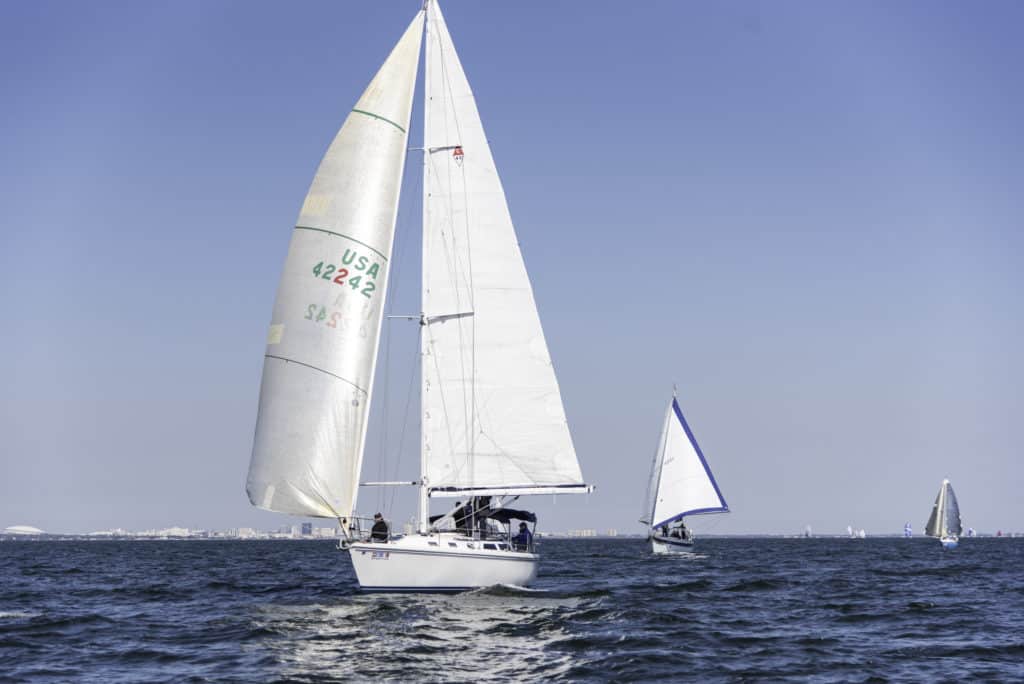
Racing yachts these days are becoming increasingly complicated machines that require highly skilled professionals to operate. For the average sailor, though, foiling multihulls and high-stress regattas may hold little interest. But there are times when it’s rewarding to be out enjoying an afternoon on the water with other sailors. Perhaps you are inspired to take part in a charity regatta to support a worthy cause, or your yacht club or community sailing organization has assembled a fleet of boats for a fun race. Now, those sorts of events might just suit your style. And of course, it is more fun to actually win the race. I have participated in a variety of charity events over the years. Many of the crews at these events do very little racing, but even still, they want a good result. Here are some thoughts on how to race safely and arrive at the finish line ahead of the fleet.
To start with, before you even step on your boat, carefully read the sailing instructions provided by the race organizers so you understand the geography of the course and the starting routine. Study the weather, and set up the sails for the predicted wind conditions. Make sure everyone in the crew has the appropriate clothing.
Once you leave the dock, hold a crew meeting to discuss safety procedures, and brief everyone aboard on the course. At this time, assign each person a specific job. Everyone appreciates the opportunity to participate in the race, and if it’s a charity event, encourage everyone on board to contribute something to the cause.
Winning the Start
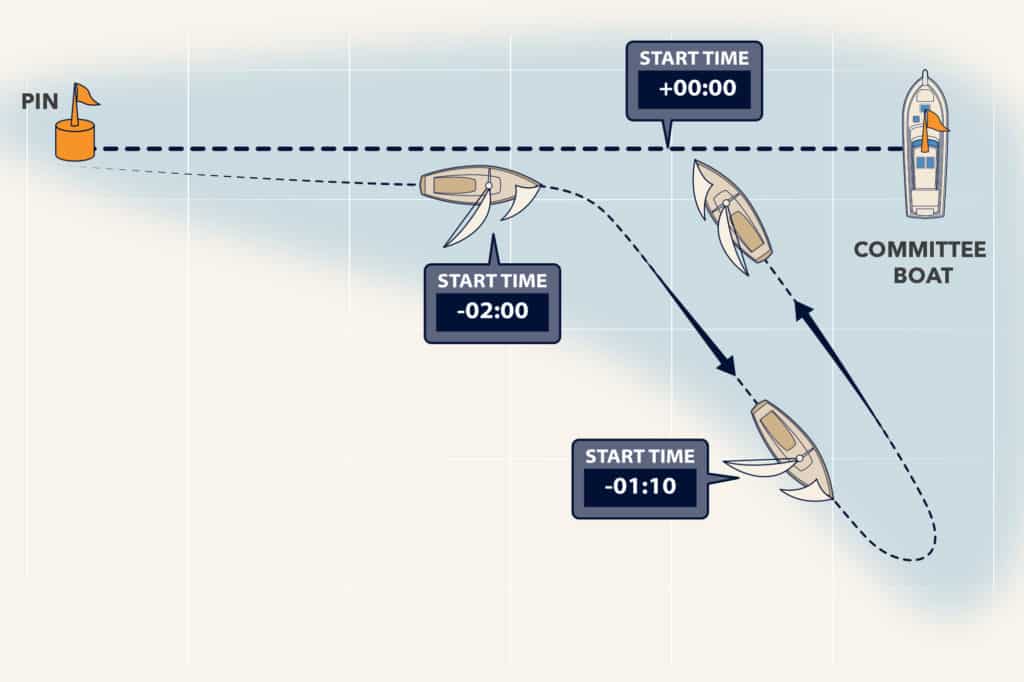
Getting off the line with clear wind — and in the lead — will give your crew a big morale boost. Most race committees use a five-minute starting sequence of flags and horns, and some also broadcast the start over VHF radio on a designated channel. Again, preview the sailing instructions so you know what to expect. The first horn will sound five minutes before the actual start time, marking the beginning of the countdown. Have a crewmember assigned to time the horns; if you miss the five, you can still recalibrate at the four-minute horn. A single horn will sound again with one minute to go, followed by the actual starting horn.
Listen carefully after the start, and monitor the VHF radio channel assigned by the race committee to see if your boat may have been recalled for being over the starting line early.
Many regattas will have different starts for classes of boats, or boats in a particular size range. Make sure you know when your class is scheduled to start. Some regattas use a pursuit, or staggered, start the theory being that boats of different speeds will all reach the finish at about the same time. If you’re sailing in one of these races, make sure you know your starting time and monitor your VHF for any updates from the race committee.
When starting a conventional race, I like using a time-run approach. Plan to be on the start line two minutes before the start, then sail away on a reciprocal course to what you’ll use when you approach the line for real. At one minute, 10 seconds before the start, tack or jibe and maneuver back toward the line, preferably on a starboard tack so you’ll have right of way over any port tackers you encounter. The tack or jibe will take about 20 seconds. At this point, accelerate to full speed toward the line. Try to stay away from other boats when you make your final approach. If you seem to be early, ease out your sails to slow down, but make sure you are sailing at full speed when the gun sounds. Often the right-hand side of the line will tend to be more crowded, so you can find room for more comfortable maneuvering if you pick a point closer to the pin (the buoy marking the other end of the starting line).
Know the Rules
The basic Racing Rules of Sailing are designed to keep boats from having a collision. The starboard-tack boat always has the right of way over the port-tack boat. On the same tack, the leeward boat has the right of way over the windward boat. An overtaking boat has to stay clear of a boat ahead. And the inside boat at a turning mark has the right of way on an outside boat making the turn. My rule when racing is to carefully watch out for other boats, don’t push the rules too hard, and give way if another boat has the right of way. After all, no one wants to spend time in a protest room after the race — or face costly repairs.
Sailing the Course
Look for the best wind to determine the favored side of the racecourse. You can see what the wind is doing by observing the dark patches on the water that indicate gusts. It sounds simple, but races are won by sailing faster in stronger wind. Assign one person to serve as tactician. This person watches the wind and looks for shifts. If you see more wind on the other side of the racecourse, then head in that direction. A word of caution, though: Limit maneuvering. Every time you make a turn, you slow down and lose distance. On a 1-mile windward leg, two to four tacks are acceptable.
At all points along the course, the helmsman and sail trimmers should work together. The tactician gives regular reports about your speed compared to the other boats. When you are fast, just keep sailing, but if you seem to be sailing slowly, experiment with your sail trim to help you keep your speed up.
Look up at the mainsail. Are the telltales trailing off the leech all flowing evenly? If not, you are likely overtrimmed. A helpful reference is to trim the sail so the top batten is parallel to the boom.
Telltales on the luff of the jib should flow evenly. If the top telltale luffs first, then adjust the jib fairlead on your track forward. If the bottom telltale luffs first, then move the lead aft. Concentrate all the time. You will be popular if you let several members of the crew spend some time steering.
Position the crew so they stay low, and keep the bulk of the crew weight out of the ends of the boat. Often a boat will sail fastest with a slight leeward heel. Move the crew out to the rail, or lean in to maintain the fastest angle of heel. You will learn what’s right by watching your performance compared to the other boats around you. When you are sailing fast, note your angle of heel and try to maintain it.
At the Mark
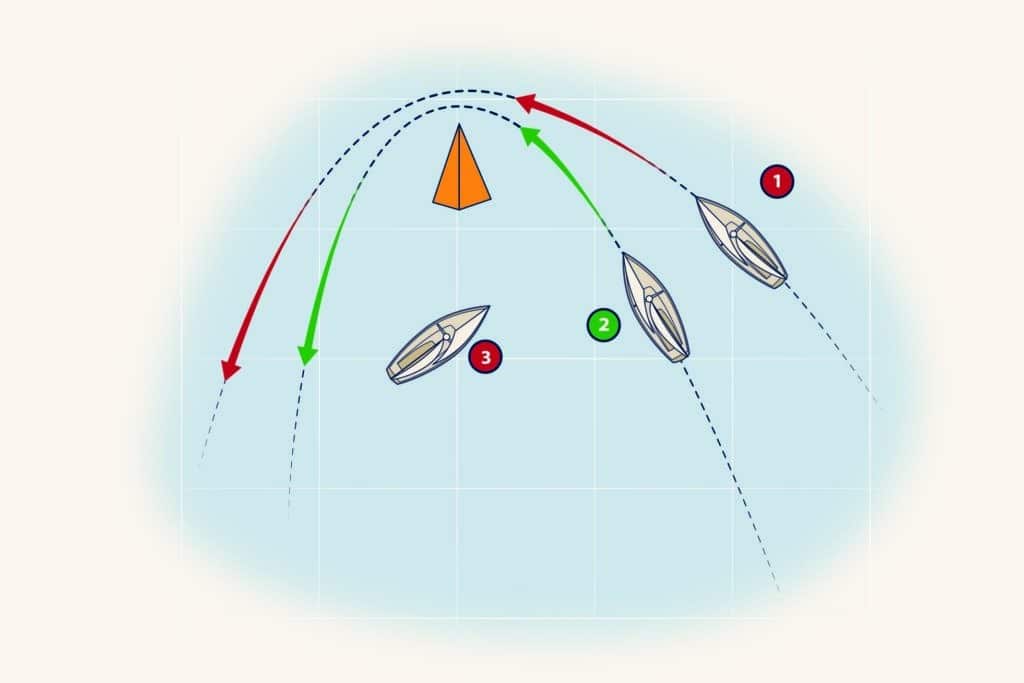
Approach the turning mark with speed, and make sure to leave it to the side indicated in the racing instructions. Remember the inside boat at the turn has the right of way. Avoid making a fast turn, because the boat will slow down. Turns should be gradual, like a skier making continuous turns on a downhill run. If you are not overlapped then give the boat ahead of you room to make the turn.
Before making that turn, ask the tactician which side of the course looks better, and let your crew know whether you plan to continue with sails set to the same side or if you’ll quickly tack or jibe.
On the downwind leg, try to sail in stronger wind, and avoid being near other boats. Simply keeping your wind clear will help your boat advance.
The biggest mistake many sailors make on the run to the leeward mark is getting wrapped up with other boats. Look for a good time to jibe away from the rest of the fleet. Again, your goal is to sail in clear wind.
Prepare your crew well in advance of any maneuver. Everyone should stay low in the boat, and walk softly from one side to the other. On a run, reshape your sails by easing the outhaul on the mainsail. A fuller sail is faster when sailing with the wind. If you are on a reach, move the jib leads forward to keep the telltales flowing evenly. Many boats use a boom vang. Look up the mainsail and make sure the top batten is lined up with the boom. If the batten is curving inward, this is an indication that the vang is too tight. When sailing straight downwind, a whisker pole might be used to wing the jib out to windward. In this case, be sure there is equal tension on the foot and leech of the sail.
The downwind leg is often the time when the skipper breaks out snacks or drinks. Be strategic when passing around sandwiches and water. It is best to do these kinds of things when the crew is not in the middle of a maneuver. Assign one crewmember to be the boat custodian and make sure everything is cleaned up, lines are clear and everyone is in the correct position.
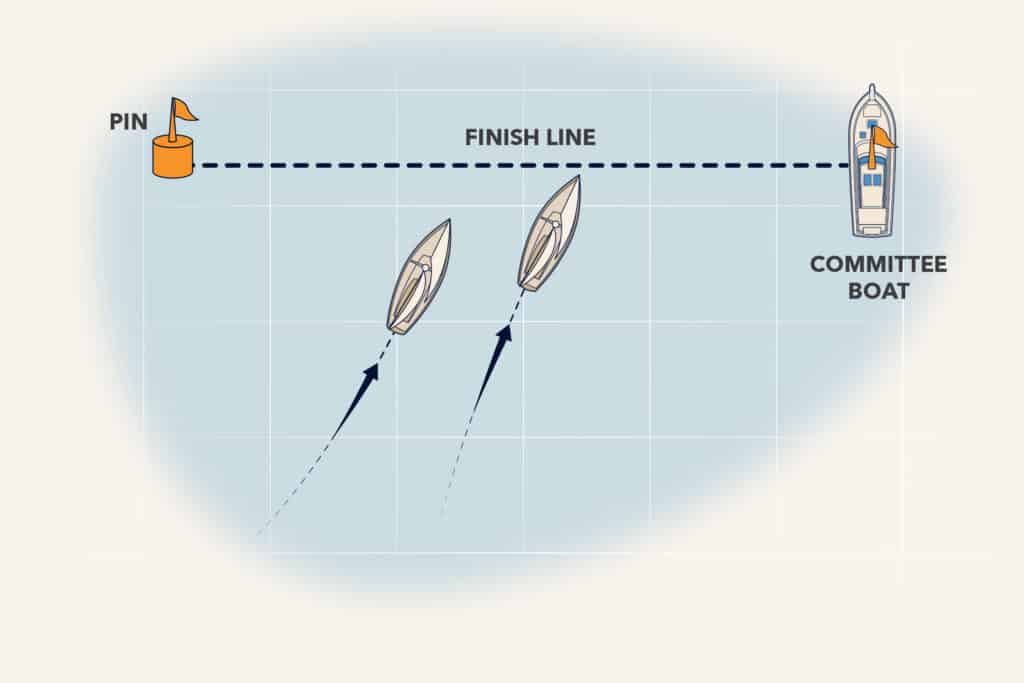
Around Again
The leeward mark is an important milestone in every race. You are shifting gears from sailing downwind to upwind. Prepare your crew well before the turn. Tighten the outhaul, and move the jib leads to their upwind position. If it’s windy, make sure the crew has the proper clothing on before making the turn. Remember, conditions change when you’re sailing closehauled again. On the first leg, you likely learned the more favorable side of the racecourse. If there was better wind on the starboard side of the course, then it will likely be better again on the next leg. Patterns tend to repeat on the water.
Keep Working
Don’t give up, regardless of your position. Many leaders have lost races by being careless, and many trailing boats have made big gains on the final leg to the finish. Talk about your performance. What have you learned during the race about speed and position? The skipper and tactician should give an update, and add in a pep talk if needed. Take the attitude that you are always trying to gain on the fleet.
Heading for Home
On the final leg, be like a runner sprinting for the finish line. Keep the crew in their racing positions. Approach the finish line on starboard tack when possible so you have right of way on other boats that are finishing at the same time. After crossing the line, sail clear of the area. If there is another race, gather the crew for a debrief. Discuss things that went well, and what can be done better. This is the time to hydrate, prepare sails, loosen up and get ready for round two. You are in the groove now, and can improve. Restate your goal and discuss what your strategy will be for the next start.
If you’re headed for the dock, whether you win, lose or come close, always end the day with a review of the race and a pep talk. The next phase of the day is likely a party back on shore. “Sail hard, play hard” is a good way to live life. Congratulate the winners, thank the crew and feel good that your guests had a good time — and, if it’s a charity regatta, that you helped a good cause reach its goal while you had fun on the water.
Gary Jobson is a CW editor at large. He’s an America’s Cup-winning tactician and longtime chairman of the Leukemia Cup Regatta, which has, to date, raised some $54 million for cancer research.
- More: How To , learn to sail , racing , sailing 101
- More How To

3 Clutch Sails For Peak Performance

It’s Time to Rethink Your Ditch Kit

8 Ways to Prevent Seasickness

How To De-Winterize Your Diesel Engine

The Moorings Expands in Croatia

C-Map Updates North America Charts
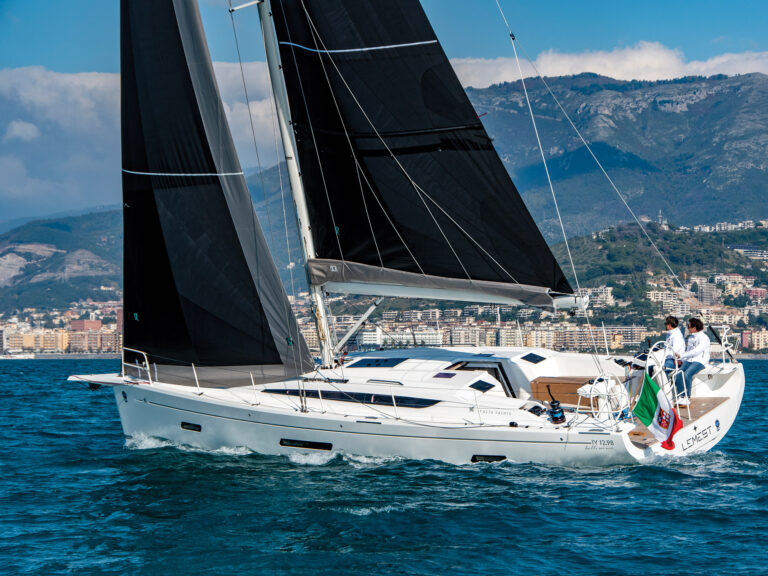
New to the Fleet: Italia Yachts 12.98

St. Vincent Court Orders Deportation For Hijacking Suspects
- Digital Edition
- Customer Service
- Privacy Policy
- Terms of Use
- Email Newsletters
- Cruising World
- Florida Travel + Life
- Sailing World
- Salt Water Sportsman
- Sport Fishing
- Wakeboarding
Many products featured on this site were editorially chosen. Cruising World may receive financial compensation for products purchased through this site.
Copyright © 2024 Cruising World. A Bonnier LLC Company . All rights reserved. Reproduction in whole or in part without permission is prohibited.

- Find A School
- Certifications
- North U Sail Trim
- Inside Sailing with Peter Isler
- Docking Made Easy
- Study Quizzes
- Bite-sized Lessons
- Fun Quizzes
- Sailing Challenge

8 Tips For the First Time Sailboat Racer
By: Pat Reynolds Learn To Sail , Sailing Fun
Once you get through the ASA 101 course and are beginning to experience sailing in a more second nature sort of way, you may want to challenge yourself to a sailboat race. Racing is a great way to accelerate the learning curve. It mandates all of the lessons into a short amount of time, with the power of consequence as a motivating factor. On a normal round the buoy race sailors are forced to make sail changes, tack , assess the conditions and maximize performance every step of the way. Some don’t care for the pressure it can bring about, but a few sailboat races is great for learning the ropes quickly. Here are eight tips for the first time sailboat racer that will make the challenge a bit more manageable and a little less daunting :
- Choose the right race Ask around and pick a race that’s not ultra competitive. There are always races that are more mellow than others. Choose one that is centered around fun, maybe a benefit regatta or a barbecue race. Allow some time to get ready and view it as a learning goal. Ask a racer along for the ride.
- Ask a racer along for the ride Find an experienced racing friend to crew and be your safety net. Nothing will take the edge off more than having a patient pal along with you to whisper in your ear as you make your way around the course. Lean on him or her as you need, but try to manage as if they were actually just crew.
- Enter non-spin class. Even if your boat has a nice spinnaker and you’ve used it a bunch of times, do the first race without that complication. Depending on what kind of boat you’re sailing you might not have a choice, but if you do, go spinnaker-less for the first couple of times out to get the rules figured out.
- Learn the fundamental rules Sailboat racing is fortunately one of those sports where you don’t have to learn every rule in order to participate, but you do have to know the basics. Check out Peter Isler’s Sailing for Dummies or Getting Started in Sailboat Racing to get up to speed on the absolute must-know rules. Once you have those pretty clear you can get out there and get some on-the-job-training without hurting anyone or spoiling anyone else’s day.

- Read the NORs Make sure you grab the Notice of Race on the website of the hosting club and read it thoroughly. This precious document will tell you lots of important information for game day. It will discuss the course(s), order of starts, communication channel and lots more. Looking at them prior to the race and having a solid understanding of what’s going on is extremely important. Go to the skipper’s meeting.
- Go to the skipper’s meeting Lots of experienced racers might skip the skipper’s meeting for races they’ve done before, but as a newbie, definitely schedule that into the plan. There you can solidify your understanding of the NORs and ask any questions you might have.
- Blow the start If you’ve done everything according to plan up until this point you may feel like you could actually win this thing! That may be so, but don’t push too hard at the start. This is the one place that gets reliably intense – boats are very close to each other and a firm understanding of the rules is on full display. In time you’ll find this is one of the most exciting parts of racing, but in the beginning, watch and learn.
- Follow the leader Once you’re off the start line and there isn’t any fiberglass dangling from your boat, just watch what others are doing and emulate. If you like racing, there will be plenty of time for waxing the fleet, but today just be a copycat. Watch what better sailors do and attempt to understand why they are making these choices. There is arguably no better way to learn than immersion and imitation.
After the last race, the most important lesson of all is revealed – that beer tastes better after a day of racing. It’s a scientific fact – Einstein proved it, but it was never published… Enjoy!
Related Posts:

- Learn To Sail
- Mobile Apps
- Online Courses
- Upcoming Courses
- Sailor Resources
- ASA Log Book
- Bite Sized Lessons
- Knots Made Easy
- Catamaran Challenge
- Sailing Vacations
- Sailing Cruises
- Charter Resources
- International Proficiency Certificate
- Find A Charter
- All Articles
- Sailing Tips
- Sailing Terms
- Destinations
- Environmental
- Initiatives
- Instructor Resources
- Become An Instructor
- Become An ASA School
- Member / Instructor Login
- Affiliate Login

NORDIC TUGS
NORTHERN MARINE
BULLFROG BOATS
MY YACHT WORTH?
- USED YACHTS
FEATURED LISTINGS
YACHTS BY BUILDER
YACHTS BY LOCATION
YACHTS BY TYPE
WHY LIST WITH US
- BUYING A TRAWLER YACHT
- TRAWLER BOAT BUYER'S GUIDE
FT LAUDERDALE
MARINA DEL REY
SAN FRANCISCO BAY
ST AUGUSTINE
VICTORIA B.C.
- SERVICE - PNW
FLOTILLA EVENTS
SEATTLE SAILING ACADEMY
- JOIN OUR TEAM
A Guide to Racing Sailboats
Sailboat racing has been around since the 17th century. Racing yachts is a sport that requires sailors to be exceptionally skilled at controlling the sailboat under extreme circumstances. Weather, wind direction, and currents in the water are all external factors that are a big part of a sailing race, or regatta, and the sailing crew must be able to handle all of these factors as well as work well together as a whole.
Types of Races
The main types of regattas that sailors partake in are inshore and offshore races. Inshore races, also known as coastal races, take place in protected waters and are usually less extreme than offshore races. They take place near the coast and tend to stay in sight of the land. The course is marked by buoys to help guide the boats on where to go. These events may be fleet races or match races. In a fleet race, many boats race on a course at the same time; a match race involves just two boats competing against each other. These races include umpires to officiate.
Offshore races usually race away from the coast, so that the land may not always be in sight. In offshore racing, you continue with the sport regardless of the weather conditions. It's crucial to be aware of other boats and competitors during an offshore race, as they may not be following the intended path, which can lead to a collision. Some of these races can cover very long distances. One of the most well-known offshore races is the Ocean Race, which typically goes around the globe, starting and ending in Europe. Conditions during this race can be difficult, as crew members may sail 20 days or more at a time between legs of the race, often in challenging weather conditions.
Crew Positions on the Boat
There are generally six to eight crew positions while racing a sailboat. However, one person may do more than one job, so the boat doesn't need to be crowded: Most racing crews have six members. The skipper is in charge of the safety of the (boat) and everyone aboard. They may also be referred to as the captain of the (boat). The navigator plots the fastest course from point A to point B by studying the weather forecasts, current, and wind positions that may affect the route. The trimmer typically trims the sails, which is what determines the boat's speed. The helm is the person who steers the boat. The bowman's job is to occupy the front of the boat, known as the bow, and handle the sails in this part of the boat, regardless of the wet and slippery conditions. The pitman ensures that the race goes smoothly by helping the crew on the front and back of the boat to communicate.
Tide and Wind Direction
It's important that the navigator of the sailboat has studied which way the tides are moving and knows the direction of the wind. It's also important for them to be able to establish both factors while out sailing if the weather changes. The stronger tides usually come with a lighter breeze in the air. If the tide is against the wind, the water will appear to be more rough and choppy, so the sails can be set up deeper. In the reverse circumstance, with the tide being with the wind, the water will appear to be stagnant, and the boat can be set up with flatter sails. The simplest way to determine the direction of the wind is to take a wet finger and hold it up in the air to see how it's blowing against your finger.
Rules of the Race
Being that sailboat racing is a sport, it consists of rules like any other sport, and some events have umpires to officiate the race as well. The most important rule is to avoid collisions with any other boat on the water. The right-of-way rules are strictly enforced to make sure that a collision doesn't happen. A starboard-tack boat has the right-of-way over a port-tack boat. It's important to give the other (boats) plenty of room whenever you pass. Another important tip is to give yourself enough room when turning or going by the buoy to avoid hitting it or colliding with other boats.
Strategies to Start the Race
Starting a regatta is a little different than most other sporting races. The time starts about five minutes before the actual start time for the boaters, as they have to direct their boat into position. Many crews will have a pre-start checklist to complete before the race, with one of the most important items being having knowledge of where the currents are on the starting line. The start of the race can be the most crucial part because the first few minutes after the gun is blown is when everyone is fighting for a clear path.
Strategies to End the Race
The last few minutes before the end of the race are crucial as well. It is very important to keep the crew in their exact positions, as there is no room for error. Like with any other type of race, it's a sprint to the finish line. Approaching the finish line from the starboard tack is common in many sailboat races because you will have the right-of-way. Lastly, it's important to not give up, because the wind direction and the currents can put a boat off track at any given moment if they aren't paying attention.
- Birthplace of U.S. Intercollegiate Sailing
- Sailing and Sports Medicine
- Sailing as Therapy
- Safe Boating Guidelines
- The Atlantic Conveyor Belt
- Ocean Winds
- Ocean Current
- Sailboat Facts for Kids
- Sailboat Types and Uses
- Right-of-Way Rules for Sailboats
- Trawlers and Sailboats
- Ocean Safety
- How Sailing Happened
- Why the Safe Leeward Works
- Understanding Current and Tide on the Racecourse
Contact Seattle Yachts
Our experienced sales team is standing by to answer your questions, no matter where you boat.

OFFICE LOCATIONS
Pacific northwest.
Shilshole Marina
7001 Seaview Ave NW, Suite 150 Seattle, WA 98117
ANACORTES - SALES
Cap Sante Marina
1019 Q Avenue, Suite A&B
Anacortes, WA 98221
ANACORTES - SERVICE
Marine Parts / Service Center
2915 W Avenue
Sun Harbor Marina
5060 N Harbor Dr, Suite 155 San Diego, CA 92106
SAN FRANCISCO BAY AREA
Marina Village Yacht Harbor
1070 Marina Village Parkway, Suite 109 Alameda, CA 94501
MARINA DEL REY, CA
Marina del Rey
13900 Marquesas Way, Suite 6002 Marina del Rey, CA 90292
FORT LAUDERDALE
Fort Lauderdale
1535 SE 17th St, Suite #103B Fort Lauderdale, FL 33316
Safe Harbour Old Port Cove
116 Lakeshore Dr. North Palm Beach, FL. 33408
Annapolis Harbor
7350 Edgewood Road Annapolis, MD 21403
SAINT AUGUSTINE, FL
Virtual Brokerage Office
International
Philippines.


The Ultimate Guide: How to Crew on a Sailboat for Beginners
Alex Morgan
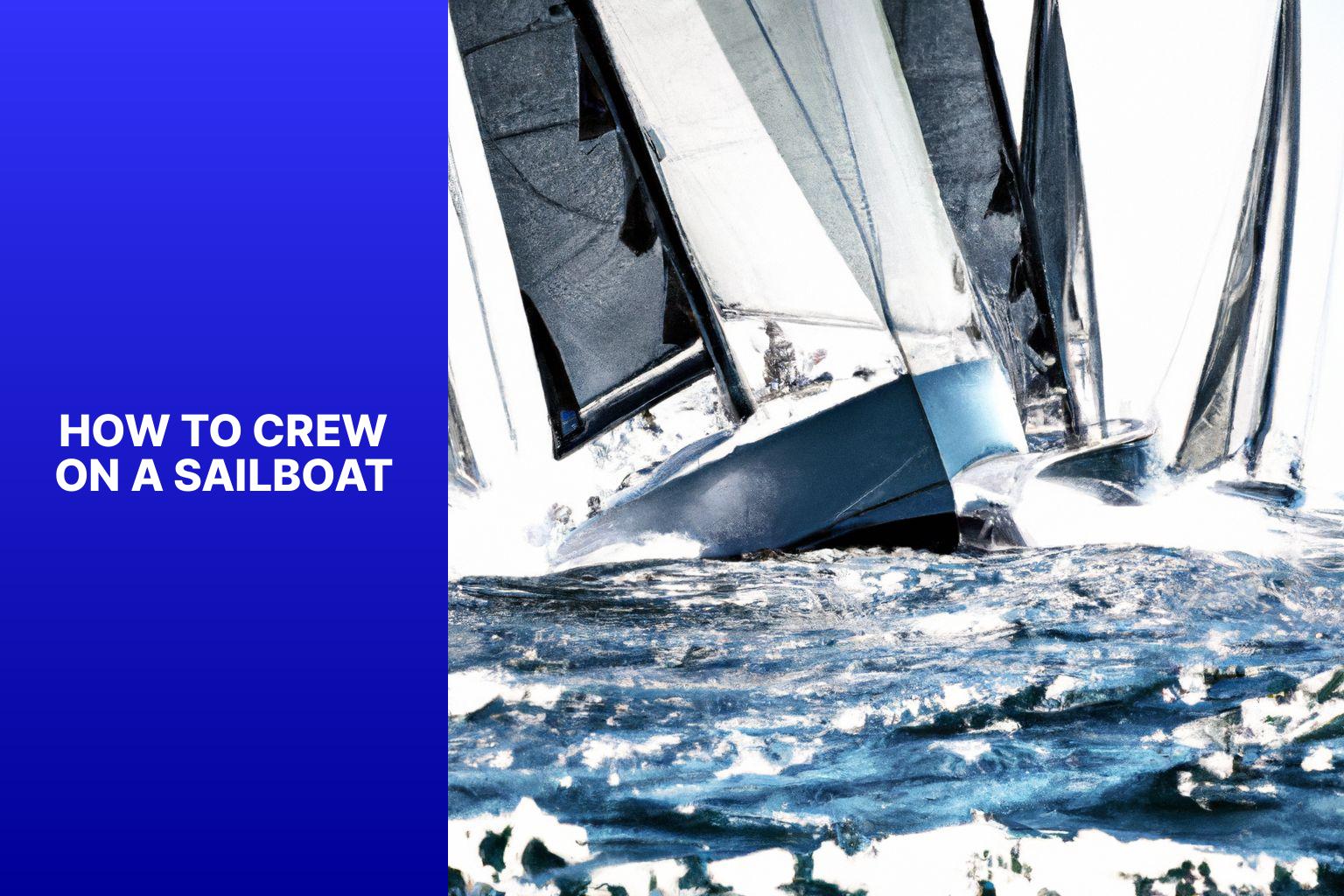
Crewing on a sailboat is an exhilarating experience that allows you to harness the power of the wind and navigate the open waters. Whether you are a seasoned sailor or a beginner looking to learn the ropes, understanding the fundamentals of crewing on a sailboat is essential for a successful voyage.
In this article, we will explore the different aspects of crewing on a sailboat, including the types of sailboats, roles, and responsibilities of crew members, essential skills and qualities, safety procedures, knot tying, sail trim, rigging, and navigation. By the end of this article, you will have a comprehensive understanding of what it takes to be a valuable crew member on a sailboat adventure.
Before we delve into the details, let’s start with an introduction to crewing on a sailboat. We will then discuss the different types of sailboats, such as monohulls and catamarans, and the distinct features and characteristics of each. Understanding the type of sailboat you will be crewing on is crucial for mastering the specific skills required on board.
Next, we will outline the various roles and responsibilities of crew members. From the skipper who leads the crew to the helm , trimmer , bow crew , mast crew , and navigator , each position plays a vital role in ensuring the smooth operation and maneuvering of the sailboat.
To be an effective crew member, certain skills and qualities are essential. We will discuss the importance of sailing knowledge and experience, teamwork and communication, physical fitness, and problem-solving skills. These attributes will contribute to a harmonious and efficient crew dynamic.
Safety is of utmost importance while at sea. We will cover the basic safety equipment that should be on board, man overboard drills for emergency situations, first aid and emergency response, as well as weather awareness and preparedness.
Knot tying and line handling skills are essential for sailboat crew members. We will introduce you to some essential knots like the bowline knot , clove hitch , and cleat hitch , as well as teach you how to properly coil and tie lines.
Understanding sail trim and rigging is another crucial aspect of crewing on a sailboat. We will explore how to control sail shape, adjust halyards and sheets, and tune the rigging to optimize performance and efficiency.
We will touch upon navigation and chart reading, including basic nautical charts, compass usage, and dead reckoning. These skills will enable you to navigate your course with confidence and precision.
By the end of this article, you will be equipped with the knowledge and skills necessary to enjoy the adventure of crewing on a sailboat. So, let’s set sail and embark on this exciting journey together.
Key takeaway:
- Crewing on a sailboat requires teamwork and communication: Successful crew members must possess strong teamwork and communication skills to effectively work together on a sailboat.
- Safety is paramount: Being aware of basic safety procedures, emergency response, and weather conditions is essential for maintaining a safe environment while crewing on a sailboat.
- Knowledge of sail trim and rigging is crucial: Understanding how to control sail shape, adjust halyards and sheets, and tune the rigging is key to optimizing performance and efficiency on a sailboat.
Types of Sailboats
When it comes to hitting the waves, understanding the different types of sailboats is key . In this section, we’ll uncover two distinct categories: monohulls and catamarans . Get ready to dive into the thrilling world of sailboat crewing as we explore the characteristics and unique features of each type. So whether you’re a seasoned sailor or a curious novice, let’s embark on a voyage of discovery and unravel the wonders of these magnificent vessels.
1. Monohulls
Monohulls, also known as sailboats with a single hull, are highly stable vessels that are capable of handling rough seas. This characteristic is what makes them immensely popular for both offshore cruising and racing activities. Monohulls come in a range of sizes, spanning from small day-sailers to colossal ocean-going yachts. The ingenious design of monohulls enables easy maneuverability and enhanced ability to sail close to the wind. For added stability, monohulls are equipped with a keel beneath the hull.
These sailboats are furnished with a variety of sails suited for diverse sailing conditions and speeds. These include the main sail, genoa, jib, and spinnaker. In order to effectively handle the sails, navigation, and steering of the boat, a crew is required. In terms of interior space, monohulls boast a comfortable and spacious layout, ideal for lengthier voyages. Their versatility is another commendable aspect as they can be utilized for day trips as well as extended cruising.
2. Catamarans
Catamarans, with their wide beam and twin hulls, are well-known for their stability and spaciousness. These characteristics make them a comfortable choice for individuals prone to seasickness .
Not only that, catamarans are generally faster than monohulls due to the reduced drag provided by their twin hulls.
When it comes to space, catamarans offer larger cabins, lounges, and deck areas, ensuring ample living and storage space.
Their shallow draft enables them to access shallow anchorages and explore areas that are out of reach for monohulls.
Choosing between a catamaran and a monohull depends on personal preferences and sailing goals.
If stability, spaciousness, and comfort are top priorities, a catamaran may be the ideal choice.
On the other hand, if speed, agility, and the ability to point higher into the wind are prioritized, a monohull may be more suitable.
Roles and Responsibilities of Crew Members
Sailing the seas is a beautiful adventure, but it takes a well-coordinated crew to navigate the unpredictable waters. In this section, we’ll dive into the essential roles and responsibilities of each crew member on a sailboat. From the knowledgeable skipper to the skilled helm , the meticulous trimmer to the agile bow and mast crew, and the sharp-eyed navigator , each position plays a vital role in ensuring a smooth and successful voyage. So, grab your life jacket and let’s set sail into the world of crewing on a sailboat.
The role of a skipper on a sailboat is crucial for the overall operation and safety of the crew and vessel. The skipper, also known as the boat captain, is responsible for making navigational decisions, ensuring the boat is operated safely and efficiently, and overseeing the activities of the crew.
One of the key responsibilities of a skipper is making navigational decisions based on their strong knowledge of seamanship and navigation. They must have excellent leadership and decision-making skills to set the course and determine sail configurations. Additionally, effective communication and teamwork abilities are essential in managing and coordinating the crew.
The skipper also plays a vital role in ensuring safety protocols are followed and has the problem-solving skills and ability to handle emergencies. They monitor weather conditions and adjust plans accordingly, relying on their strong understanding of meteorology and weather patterns.
For aspiring skippers, it is recommended to continuously learn and improve their sailing skills and knowledge. Participating in races or joining sailing clubs can provide valuable experience and opportunities to refine their leadership abilities. It is also important to stay up-to-date with advancements in technology and equipment to enhance their proficiency in managing the boat and crew.
Remember, becoming an effective skipper takes time and experience. Embrace a lifelong learning mindset and commit to ongoing growth and development to excel in this important role on a sailboat.
The helm is responsible for steering and controlling the direction of a sailboat. To effectively helm a sailboat, follow these steps:
1. Take your position at the helm and familiarize yourself with the steering mechanism.
2. Maintain a steady grip on the tiller or wheel and balance your stance.
3. Monitor the wind direction and adjust the sails accordingly for optimal performance.
4. Coordinate maneuvers and navigate obstacles by communicating with the skipper and crew.
5. React promptly to changes in wind speed and direction to maintain control of the boat.
6. Keep a lookout for other vessels, obstacles, or potential hazards in the water.
7. Steer the boat smoothly and make minor course adjustments as needed.
8. Be aware of the boat’s speed, acceleration, and responsiveness to your steering inputs.
To enhance your helm skills, practice regularly in different weather conditions and on various sailboats. Seek feedback from experienced sailors and learn from their insights. Remember, mastering the helm requires sailing knowledge, adaptability, and sharp decision-making skills. Enjoy the adventure of crewing on a sailboat and embrace the learning opportunities it offers.
The trimmer is an essential role on a sailboat. Their primary responsibility is to adjust the sails for optimal performance and efficiency. They achieve this by changing the sail position based on the wind direction and speed. Collaborating closely with the helm, the trimmer ensures the sails are adjusted according to the boat’s course and desired speed. Clear communication between the trimmer and helm is crucial for making quick adjustments.
In addition, the trimmer continuously monitors the sail performance and makes necessary adjustments to maintain optimal speed and efficiency. They also assist in tuning the rigging by adjusting the tension of the mast, shrouds, and stays. This helps improve the sail shape and overall performance of the boat.
During sail changes, the trimmer plays a vital role in hoisting, lowering, and adjusting new sails efficiently. Their expertise in sail trim allows them to minimize any loss of speed or performance during these transitions.
The trimmer needs to have a deep understanding of wind shifts and the ability to anticipate changes in wind direction. This skill allows them to make proactive adjustments to maintain optimal sail trim.
The trimmer is crucial in maximizing sailboat performance. Their expertise in sail trim and ability to quickly adapt to changing conditions are essential for success on the water.
4. Bow Crew
The Bow Crew , also known as the Bow Crew , plays a crucial role in the smooth operation and navigation of a sailboat. This team has a set of key responsibilities and tasks, including the following:
1. Setting and handling the anchor: As part of their duties, the Bow Crew prepares and deploys the anchor when the sailboat reaches its intended anchorage. It is essential that they know how to properly set and secure the anchor to keep the boat in place.
2. Managing the bow line: Another important task for the Bow Crew is handling the bow line, which is used for mooring the boat or securing it to a dock. To accomplish this safely and securely, they need to possess the necessary skills in knot tying and line handling.
3. Assisting with docking maneuvers: During the docking process, the Bow Crew provides assistance with line handling and ensuring that the boat remains a safe distance from the dock to avoid any damage. Effective communication with other crew members is crucial for a smooth and secure docking process.
4. Keeping a lookout: A primary responsibility of the Bow Crew is to keep a vigilant watch for any potential obstacles or hazards in the water, including other boats, buoys, or rocks. Their role is to promptly alert the rest of the crew to ensure safe navigation.
5. Handling sails and line adjustments: As part of their tasks, the Bow Crew assists with handling and adjusting sails, particularly during tacking or gybing. It is important for them to be familiar with the proper techniques for hoisting, lowering, and reefing sails.
Being a member of the Bow Crew requires a keen attention to detail, excellent communication skills, and the ability to work effectively as part of a team. Safety and efficiency are of paramount importance in the performance of these duties.
5. Mast Crew
The role of the mast crew is vital in ensuring the smooth operation and maneuverability of a sailboat. The mast crew plays a significant role in handling and maintaining the sails to optimize the performance of the boat. They are responsible for various tasks, including hoisting and lowering sails as directed by the skipper or helm, ensuring proper alignment and integrity.
The crew members also trim and adjust the sails to achieve the desired sail shape and maximize speed and efficiency using control lines such as halyards, sheets, and reefing lines. They proficiently assist in reefing , reducing the sail’s size during strong winds. The mast crew is responsible for inspecting and maintaining sail-related equipment, promptly fixing any issues that arise. Effective communication between the crew members, helm, and trimmers is crucial to ensuring coordination between sail adjustments and boat maneuvers.
To be a successful mast crew member, it is essential to have a good understanding of sail trim , excellent teamwork, communication skills, physical fitness, and problem-solving abilities. Safety should always be a priority, and crew members should be knowledgeable about safety procedures, weather conditions, and emergency response protocols.
To excel in this role, it is recommended to practice tying essential knots such as the bowline , clove hitch , and cleat hitch . Understanding navigation charts, using a compass, and mastering dead reckoning will greatly enhance your skills. Embrace the challenges and rewards of being a vital part of the mast crew and enjoy the adventure of crewing on a sailboat.
6. Navigator
The role of a navigator on a sailboat is crucial for the safe and accurate navigation of the vessel. The navigator is responsible for incorporating their expertise in chart reading, navigation instruments, and situational awareness to guide the boat to its destination. Collaborating with other crew members, the navigator ensures that informed decisions are made based on the current conditions and the planned route. By efficiently using nautical charts and considering factors such as wind direction, current, and obstacles, the navigator plots the best course. They also read and interpret charts, understanding symbols, depth contours, and other information to locate the boat’s position and plan the route. Navigational instruments like compasses, GPS devices, and depth sounders are utilized by the navigator to accurately determine the boat’s heading, speed, and position. The navigator practices dead reckoning , estimating the vessel’s position based on the previous known position, course, speed, and time elapsed. It is important for the navigator to maintain situational awareness , remaining alert to detect any changes in conditions, hazards, or approaching vessels. Ultimately, a skilled navigator plays a vital role in ensuring the safety of the crew and the boat, making the journey a success.
Essential Skills and Qualities for Crew Members
Ready to set sail? In this section, we’ll delve into the essential skills and qualities that make a great crew member on a sailboat. From sailing knowledge and experience to teamwork and communication skills , physical fitness , and problem-solving abilities , we’ll uncover what it takes to be an invaluable part of a sailing team. So grab your life jacket, because we’re about to embark on an exciting journey through the seas of crewing on a sailboat!
1. Sailing Knowledge and Experience
When it comes to sailing, having a strong foundation of sailing knowledge and experience is crucial for crew members. Here are some important points to consider:
1. Take sailing courses: Sailing courses provide valuable knowledge and hands-on experience. Courses like the American Sailing Association’s Basic Keelboat or Royal Yachting Association’s Competent Crew can teach fundamental skills and build confidence.
2. Join crewing opportunities: Enhance your sailing experience by actively seeking crewing opportunities. Connect with experienced sailors through local sailing clubs or associations. Offer your services as a volunteer crew for regattas or offshore races to gain practical experience.
3. Practice on different sailboats: Expand your sailing knowledge by familiarizing yourself with various types of sailboats, such as monohulls and catamarans. Each type has unique characteristics and requires different handling techniques.
4. Learn sail trim: Understanding sail trim is essential for optimizing a sailboat’s performance. Make sure to familiarize yourself with concepts like wind angle, sail shape, and adjusting halyards and sheets for proper sail tension.
5. Navigate using charts: Develop the necessary skills to navigate using basic nautical charts. Learn how to interpret symbols, depth soundings, and landmarks to plot a course and ensure safe passage.
6. Gain experience in different sailing conditions: Improve your proficiency by actively practicing sailing in various weather conditions and sea states. This will allow you to handle different situations with ease.
By continuously learning and gaining hands-on experience, crew members can significantly improve their sailing knowledge and skills, ultimately resulting in safer and more enjoyable sailing experiences.
2. Teamwork and Communication
Teamwork and communication are crucial for a successful sailing experience. It is important to consider several key aspects:
Clear communication: Use concise language to effectively convey information and instructions among crew members. This includes using proper nautical terms and hand signals while on the water.
Active listening: Actively listen to each other and the skipper to ensure a clear understanding of tasks, directions, and safety procedures.
Collaboration: Working together as a team is vital for smooth sailing. Support each other, share responsibilities, and coordinate tasks to maintain the boat’s performance.
Trust and respect: Trust and respect each other’s abilities and decisions to create a cohesive crew. Value each person’s contribution and treat everyone with respect.
Problem-solving: When faced with challenges or unexpected situations, maintain a calm and proactive approach. Collaborate to find solutions and make quick decisions when necessary.
Adaptability: Sailing conditions can change rapidly. Be adaptable to adjust strategies and actions accordingly. Being flexible and open to change is crucial for successful teamwork.
Efficient coordination: Coordinate movements and actions to maximize efficiency and prevent accidents or mishaps. Synchronize maneuvers, handle equipment together, and maintain good balance and stability.
By prioritizing teamwork and communication, a sailboat crew can operate smoothly and enjoy a safe and rewarding sailing experience.
3. Physical Fitness
Physical fitness is important for crew members on a sailboat. Here are the key factors to consider:
- Endurance : Crew members need good cardiovascular fitness to endure long hours of physical activity on the boat, like hiking out or grinding winches.
- Strength : Strength is crucial for tasks like hoisting sails and maneuvering equipment. Upper body and core strength are particularly important.
- Flexibility : Flexibility helps crew members perform maneuvers effortlessly, like moving around the boat, adjusting sails, and maintaining balance.
- Balance : Good balance is essential to prevent falls and injuries on a moving sailboat. Crew members should practice exercises that improve stability and coordination.
- Agility : Sailboats require quick and agile movements, especially during maneuvers or when responding to changing wind conditions. Agility training helps crew members react swiftly and efficiently.
Maintaining physical fitness is vital for the safety of crew members and the overall performance of the sailboat. Regular exercise, including cardiovascular workouts, strength training, stretching, and balance exercises, can improve physical fitness and enhance sailing abilities.
In the Volvo Ocean Race, physical fitness played a crucial role in the success of the teams. The sailors endured extreme weather and long hours of physical exertion. Teams prioritized fitness training tailored to sailing’s demanding nature. This focus not only improved performance on the boat but also reduced the risk of injuries and contributed to overall well-being. The dedication to physical fitness exemplified the importance of being in top form as a crew member on a sailboat.
4. Problem-Solving Skills
Problem-solving skills are essential for crewing on a sailboat. Here are key points to consider:
- Quick thinking: Crew members must think quickly and come up with solutions to unexpected challenges that may arise during a sail. This could include equipment malfunctions or changing weather conditions.
- Resourcefulness: Being resourceful is crucial when problem-solving on a sailboat. Crew members need to make the most of limited resources, using their creativity to find solutions.
- Clear communication: Effective communication is vital for problem-solving as it allows crew members to share information and ideas. It also helps avoid misunderstandings and ensures everyone is on the same page when addressing a problem.
- Collaboration: Problem-solving on a sailboat often requires teamwork. Crew members must work together, listen to each other’s ideas, and contribute their expertise to find the best solution.
- Adaptability: The ability to adapt and adjust plans is crucial when facing challenges on a sailboat. Crew members should be flexible and willing to change course if necessary, prioritizing the safety and well-being of the crew.
Fact: Cultivating problem-solving skills enhances a crew member’s proficiency and boosts the overall well-being and success of the sailing experience.
Safety and Emergency Procedures
When it comes to crewing on a sailboat, one aspect that cannot be overlooked is safety and emergency procedures . It’s crucial to have a solid understanding of how to handle any unforeseen situations that may arise. In this section, we will explore the key elements that contribute to a safe sailing experience . From basic safety equipment to man overboard drills , first aid and emergency response, and weather awareness and preparedness , we will cover everything you need to know to ensure a seamless and secure journey on the open waters .
1. Basic Safety Equipment
Basic safety equipment is crucial for sailboat crew members to guarantee the well-being and security of all on board. Here is a comprehensive list of necessary safety equipment:
- Life jackets : Every crew member requires a properly fitting life jacket approved by the Coast Guard. These jackets provide buoyancy during emergencies.
- Throwable flotation devices: An easily accessible flotation device, such as a lifebuoy or rescue ring, should be readily available for rescuing individuals who fall overboard.
- Fire extinguisher : An easily accessible fire extinguisher that is properly maintained is vital in case of fires on the boat.
- Flares : Flares are used for signaling for help during emergencies. Crew members should be knowledgeable about their usage and have them easily accessible.
- First aid kit : It is essential to have a well-stocked first aid kit on board to treat minor injuries and provide initial care until professional medical assistance is available, if necessary.
- Bilge pump : A bilge pump aids in removing water from the boat’s bilge, ensuring the vessel remains afloat and free from excess water.
Regular inspection and maintenance of all safety equipment is critical to ensuring proper functionality. It is also important for crew members to be familiar with the location and operation of these items in order to swiftly respond during emergencies.
2. Man Overboard Drills
Man Overboard Drills are critical for sailboat safety. These drills are essential to ensure that the crew is well-prepared and able to respond promptly and efficiently in the event that someone falls overboard. Here are the steps to follow when conducting man overboard drills:
- Alert the crew by shouting “Man overboard!”
- Indicate the person’s location by pointing at them in the water.
- Mark the spot by activating the man overboard button on the boat’s navigation system.
- Assign a crew member to maintain visual contact with the person in the water.
- Position the boat in a close-hauled position to have the best sailing angle towards the individual.
- Throw a flotation device towards the person in the water.
- Assign a crew member to initiate the recovery process while wearing a safety harness and lifeline.
- Approach the person in the water while maintaining a safe distance.
- Use a boat hook or your hand to grab hold of the person’s life jacket or clothing.
- Assist the person in getting back onto the boat using proper lifting and transfer techniques.
Remember, regular practice of man overboard drills improves the proficiency of the crew and ensures the safety of everyone on board. It’s also crucial to designate a specific crew member responsible for calling for outside assistance if necessary. Stay vigilant and be prepared for any emergencies while out at sea.
3. First Aid and Emergency Response
When it comes to sailing, being prepared for emergencies and knowing how to respond is crucial. Here are some important aspects to consider for first aid and emergency response :
1. Basic Safety Equipment: All crew members should know the location and proper use of safety equipment such as life jackets, fire extinguishers, and flares.
2. Man Overboard Drills: Knowing how to quickly perform a man overboard drill is crucial in case someone falls overboard. This involves maneuvering the boat, throwing out a lifebuoy or device to mark the spot, and executing a rescue plan.
3. First Aid and Emergency Response: Crew members should have a basic understanding of first aid techniques, including CPR and basic wound care. It is important to have a well-stocked first aid kit on board with essentials like bandages, antiseptic solutions, and pain relievers.
4. Weather Awareness and Preparedness: Monitoring changing weather conditions is crucial for safety. Crew members should understand the signs of impending storms and know how to respond appropriately, such as reefing the sails or seeking shelter.
True History Fact: During a sailing race in the Caribbean in 2014, a crew member suffered a severe leg laceration due to a shifting piece of equipment. The crew’s knowledge of first aid and emergency response allowed them to quickly control the bleeding and provide proper wound care until the injured crew member could receive medical attention at the nearest port.
4. Weather Awareness and Preparedness
Weather awareness and preparedness are vital for the safety of sailing. In order to ensure a safe journey, it is important to follow these steps:
- Stay updated: It is essential to regularly check weather forecasts to stay informed about any changes or alerts.
- Learn the signs: Familiarize yourself with visual cues that indicate different weather patterns, such as cloud formations or shifts in wind direction.
- Understand wind patterns: Take the time to study wind maps and charts so that you can identify the prevailing winds in your sailing area. This knowledge will assist you in planning your course and anticipating any potential changes in wind speed and direction.
- Monitor barometric pressure: Stay vigilant and keep track of any changes in barometric pressure, as they can serve as an indication of approaching storms or changes in weather conditions.
- Be aware of storm systems: It is crucial to stay informed about the development and movement of storms, including tropical storms and hurricanes, as they may affect your chosen sailing route.
- Prepare for adverse weather: Make sure to have the necessary gear on board, such as rain jackets, warm clothing, and safety harnesses, in order to protect yourself from inclement weather.
- Develop an emergency plan: Create a procedure for handling extreme weather situations and ensure that all crew members are familiar with it.
- Know your limits: It is important to understand the capabilities of your boat and the skill level of your crew. Avoid sailing in conditions that are beyond your comfort or experience level.
- Seek shelter if necessary: In the event of severe weather, it is advisable to find a safe haven where you can anchor or take refuge until conditions improve.
Essential Knots and Line Handling
Mastering the art of knot tying and line handling is an essential skill for any crew member on a sailboat. In this section, we’ll dive into the world of essential knots and various techniques for handling lines. From the versatile bowline knot to the secure clove hitch and convenient cleat hitch , we’ll explore the key knots that every sailor should know. We’ll cover tips and tricks for properly tying and coiling lines, ensuring smooth and efficient sailing adventures. Get ready to become a knot-tying expert !
1. Bowline Knot
The bowline knot is a crucial knot for sailors, as it creates a strong loop at the end of a rope. To tie a bowline knot , follow these steps:
1. Start by making a small loop in the rope, ensuring that the end of the rope is on top.
2. Pass the end of the rope through the loop from underneath.
3. Next, bring the end of the rope around the standing part of the rope.
4. Pass the end of the rope back through the loop.
5. Tighten the knot by simultaneously pulling on the standing part of the rope and the end of the rope.
6. Once tightened, the bowline knot will securely hold, creating a loop that won’t slip.
During a sailing trip, a sudden storm caused a crew member to fall overboard. In response, the skipper immediately called for a man overboard drill, and the crew swiftly sprang into action. One skilled sailor promptly tied a bowline knot on a rescue line, ensuring a secure loop to pull the crew member back on board. The bowline knot proved its reliability as it held strong, resulting in a safe and successful rescue. It is crucial for sailors to know and practice essential knots like the bowline, especially in emergency situations at sea.
2. Clove Hitch
The Clove Hitch is a versatile knot used for various purposes on a sailboat. It is a reliable knot that can hold tension in two directions, making it useful for attaching fenders, securing sails, or creating anchor points. Tying a Clove Hitch is a quick and easy way to secure a line to a cleat or pole on a sailboat. Here are the steps to tie a Clove Hitch :
- Make a loop with the rope.
- Pass the end of the rope over the standing part.
- Bring the end of the rope under the standing part and over the loop.
- Pass the end of the rope under the standing part again.
- Pull the end of the rope tight to secure the Clove Hitch .
Practice tying the Clove Hitch to improve your knot-tying skills and ensure the safety and stability of your sailboat.
Fact: The Clove Hitch is named after the clove tree, known for its strength and durability in securing sailing knots.
3. Cleat Hitch
The cleat hitch is a practical knot for fastening a line to a cleat on a sailboat. Here are the steps to tie a cleat hitch:
1. First, take the line and pass it around the base of the cleat .
2. Next, cross the line over itself and bring it under the opposite horn of the cleat .
3. Then, loop the line over the top of the opposite horn of the cleat .
4. After that, wrap the line under the first loop, creating a figure-eight shape.
5. Now, pass the line under the second horn of the cleat .
6. Pull the line tightly to securely hold the cleat hitch in place.
Remember to always double-check that the cleat hitch is properly secured before relying on it to withstand tension. The cleat hitch is a reliable knot that can handle significant loads.
To improve your proficiency in tying the cleat hitch , make sure to practice it regularly. Get familiar with different sizes and types of cleats to be prepared for various situations while working on a sailboat.
4. Tying and Coiling Lines
When tying and coiling lines on a sailboat, it is important to follow these steps for a secure and efficient operation:
1. Begin by untwisting and freeing the line of any knots and tangles.
2. Next, wrap the line around a fixed object such as a cleat or winch at least two times. This will provide a secure anchor point .
3. To create a “ half hitch ,” form a loop with the line and pass the working end through it.
4. Pull the working end tight to securely fasten the half hitch .
5. Repeat the process of creating half hitches until the line is fully and securely fastened .
6. When it comes to coiling the line , hold the end in one hand and use your other hand to create loops.
7. Make sure to alternate the direction of each loop to create neatly coiled line .
8. To secure the end of the line , tuck the working end under one of the loops.
9. It is important to ensure that the coiled line is tidy and compact to prevent tangles and make it easier to handle.
Following these steps will ensure that your lines are properly tied and coiled , allowing for efficient and safe operation of the sailboat.
Understanding Sail Trim and Rigging
Get ready to set sail with an in-depth exploration of sail trim and rigging . We’ll uncover the secrets of controlling sail shape , fine-tuning halyards and sheets , and perfecting the rigging . Whether you’re a seasoned sailor or just getting started, this section will equip you with the knowledge you need to navigate the waters with confidence . So hop on board and let’s dive into the fascinating world of sail trim and rigging !
1. Controlling Sail Shape
Controlling sail shape is crucial for maximizing performance and efficiency. Here are the steps to effectively control sail shape:
Adjust halyard tension: Increase tension to flatten the sail for faster and more efficient sailing. This reduces drag and improves the boat’s movement through the water.
Tweak sheet angle: Sheet angle affects sail shape. By trimming the sheets appropriately, you can achieve the desired shape. Easing the sheets creates a fuller shape for lighter winds, while trimming in flattens the sail for stronger winds.
Use cunningham or downhaul: These lines control tension along the sail’s luff. Adjusting them flattens the sail and controls its shape, especially in the lower section.
Consider vang or boom kicker: These help control the sail’s twist. Adjusting them controls the shape of the upper part of the sail and maintains efficient airflow.
Use mast bend: Fine-tune mast bend to adjust sail shape. This can be achieved by adjusting backstay tension or using a mast bend control system.
Monitor and adjust sail controls: Use telltales attached to the sail to gauge its efficiency. Smooth-flowing telltales indicate optimal sail shape. Make necessary adjustments if the telltales are not flowing smoothly.
Observe and react to changing wind conditions: Continuously adjust the sail shape based on prevailing wind conditions. Lighter winds require fuller sails, while stronger winds need flatter sails to reduce heeling and maintain control.
By using these techniques, sailors can maintain optimal sail shape, leading to increased speed, improved stability, and overall better performance on the water.
2. Adjusting Halyards and Sheets
Adjusting halyards and sheets is important for sailboat crew members. It optimizes sail performance by making changes to the positioning and tension of the halyards and sheets . Here are some key points to consider:
1. Understanding sail shape: Adjusting halyards and sheets controls sail shape, impacting speed and maneuverability.
2. Tensioning halyards : Proper tensioning shapes the sails and captures wind effectively.
3. Trimming sheets : By adjusting sheets , crew members can fine-tune sail angle and tightness.
4. Balancing tension: Maintaining a proper balance prevents stress on the sails and rigging, promoting smoother sailing and reducing the risk of damage.
5. Continual monitoring: Adjustments may be needed throughout the sail, depending on wind shifts and other factors. Crew members should be attentive for optimal sail performance.
Mastering the skill of adjusting halyards and sheets enhances the overall efficiency and performance of the sailboat, improving the sailing experience for everyone on board.
3. Tuning the Rigging
To tune the rigging on a sailboat, follow these steps:
1. Inspect the rigging for wear or damage—look for frayed cables or loose connections.
2. Measure the tension in the rigging using a tension gauge. The optimal tension is typically around 15-20% of the breaking strength.
3. Adjust the rigging by turning the turnbuckles clockwise if it is too loose. Use a wrench to do this.
4. If the rigging is too tight, loosen it by turning the turnbuckles counterclockwise. Be careful not to over-loosen to prevent excessive mast movement.
5. After making adjustments, re-measure the tension using the tension gauge. Continue adjusting until the desired tension is achieved.
6. Check the mast rake, which is the forward or backward inclination of the mast. You can change the mast rake by adjusting the mast step or forestay tension.
7. Lastly, check the alignment of the mast. It should be straight from top to bottom. If there is any misalignment, adjust the rigging as needed.
Following these steps will ensure that the rigging on your sailboat is properly tuned, which is crucial for optimal performance and safety on the water.
Navigation and Chart Reading
Embarking on a sailboat adventure requires mastering the art of navigation and chart reading. In this section, we’ll dive into the essential skills needed to navigate the vast waters. From understanding basic nautical charts to utilizing a compass and practicing dead reckoning, we’ll equip you with the knowledge to confidently sail the seas. So, grab your compass and get ready to set sail on a thrilling journey of exploration and discovery !
1. Basic Nautical Charts
When crewing on a sailboat, it is crucial to understand basic nautical charts. These charts provide detailed information about navigational aids, such as buoys, beacons, and lighthouses, which help sailors determine their position and navigate safely. They also indicate water depths using soundings and contour lines to prevent grounding. Nautical charts include landmarks and features such as shorelines, islands, rocks, and channels, which help sailors identify their location and plan routes. Familiarizing yourself with the symbols and abbreviations used in charts can help you understand the information more effectively. Paying attention to the chart’s scale and orientation is important for accurate interpretation of distances and directions. It is also crucial to regularly update charts for changes in water depth, landmarks, and navigational aids, using the most recent chart available for accuracy. By using basic nautical charts, crew members can navigate safely and effectively on a sailboat.
2. Using a Compass
When it comes to sailing, using a compass is essential for navigation. Here are the steps involved:
1. Hold the compass level and steady, away from magnetic interference.
2. Align the compass housing with the direction of travel arrow.
3. Read the degree markings on the compass housing to determine the bearing.
4. Rotate the compass housing until the red magnetic needle aligns with the orienting arrow.
5. Read the determined bearing from the degree markings on the compass housing.
6. Keep the compass level and steady while following your desired bearing.
7. Periodically check the compass to ensure you are staying on course.
Using a compass accurately helps navigate, even when landmarks or other aids are not visible. It is an essential tool for sailors to reach their destination safely and efficiently.
In the early years of sailing, compasses were not always reliable due to factors like iron on the ship or variations in the Earth’s magnetic field. Advancements in compass technology and understanding of magnetic forces have made modern compasses more accurate and dependable. Today, sailors can rely on compasses to guide them, providing them with direction and improving their sailing experience.
3. Dead Reckoning
When sailing, dead reckoning is a technique to estimate your current position based on previous known positions and the boat’s course and speed. Here’s how you can do dead reckoning:
1. Record the boat’s starting position, course, and speed.
2. Monitor the boat’s course and speed over time, making adjustments for any changes.
3. Use the elapsed time and the boat’s speed to calculate the distance traveled.
4. Based on the boat’s course and distance traveled, plot a line on the chart from the starting position in the direction of the course.
5. If the boat changes course or speed, make note of these changes and adjust the line accordingly.
6. If there are known landmarks or navigational aids along the course, use them to confirm the estimated position.
Pro-tip: Improve the accuracy of dead reckoning by regularly comparing the estimated position with actual positions obtained through other navigation techniques such as celestial navigation or GPS.
Some Facts About How To Crew On A Sailboat:
- ✅ There are sailing opportunities available for amateur and professional crew members worldwide. (Source: Crewseekers.net)
- ✅ It is free for everyone to browse through all current sailing opportunities, but membership is required to contact yacht owners and join their crew. (Source: Crewseekers.net)
- ✅ Walking the docks in sailing towns and using the internet are effective ways to find crew opportunities and work on sailboats. (Source: Transitions Abroad)
- ✅ Some captains are willing to take inexperienced sailors and teach them along the way, making crew positions accessible to those without prior experience. (Source: Transitions Abroad)
- ✅ Crewing on sailboats allows individuals to experience the rawness and basic nature of life at sea, as well as the beauty of the ocean and the night sky. (Source: Transitions Abroad)

Frequently Asked Questions
1. how can i find crewing opportunities on sailboats.
You can find crewing opportunities on sailboats by walking the docks in sailing towns and talking to people, using the internet to search for crew opportunities, or participating in cruising rallies organized by experienced sailors.
2. Are there sailing opportunities available for all experience levels?
Yes, there are sailing opportunities available for both amateur and professional crew members worldwide, regardless of their experience level.
3. How can I join a sailboat crew?
To join a sailboat crew, you need to register and become a member of a yacht crew introduction agency. This will allow you to browse through current sailing opportunities and contact yacht owners to join their crew.
4. What are the essential roles on a sailboat?
The essential roles on a sailboat include the Captain, who is the decision maker; the cook, who ensures the crew’s sustenance; the person at the helm, who makes critical decisions; and the dog watchers, who take care of the dog and anchor during off hours.
5. Can inexperienced sailors join sailboat crews?
Yes, many sailboat captains are willing to take inexperienced sailors and teach them along the way. Trustworthiness and a hard-working attitude are important attributes when looking for a crew position.
6. What are the benefits of crewing on a sailboat for travel?
Crewing on a sailboat for travel offers a unique and affordable way to see the world. It saves money on airfare and provides a stronger connection to nature and the universe. It can also be a life-changing experience and an opportunity to learn new skills.
About the author
Leave a Reply Cancel reply
Your email address will not be published. Required fields are marked *
Save my name, email, and website in this browser for the next time I comment.
Latest posts

The history of sailing – from ancient times to modern adventures
History of Sailing Sailing is a time-honored tradition that has evolved over millennia, from its humble beginnings as a means of transportation to a beloved modern-day recreational activity. The history of sailing is a fascinating journey that spans cultures and centuries, rich in innovation and adventure. In this article, we’ll explore the remarkable evolution of…

Sailing Solo: Adventures and Challenges of Single-Handed Sailing
Solo Sailing Sailing has always been a pursuit of freedom, adventure, and self-discovery. While sailing with a crew is a fantastic experience, there’s a unique allure to sailing solo – just you, the wind, and the open sea. Single-handed sailing, as it’s often called, is a journey of self-reliance, resilience, and the ultimate test of…

Sustainable Sailing: Eco-Friendly Practices on the boat
Eco Friendly Sailing Sailing is an exhilarating and timeless way to explore the beauty of the open water, but it’s important to remember that our oceans and environment need our protection. Sustainable sailing, which involves eco-friendly practices and mindful decision-making, allows sailors to enjoy their adventures while minimizing their impact on the environment. In this…
- Saudi Arabia
- Palestine-Israel
- Arab Showcase
- Australasia
- The Americas
- Environment
- Road to Net Zero
- Art & Design
- Film & TV
- Music & On-stage
- Pop Culture
- Fashion & Beauty
- Home & Garden
- Things to do
- Combat Sports
- Horse Racing
- Beyond the Headlines
- Trending Middle East
- Business Extra
- Culture Bites
- Year of Elections
- Pocketful of Dirhams
- Books of My Life
- Iraq: 20 Years On
Sailing positions explained
A primer for the different roles onboard one of the seven yachts that will sail around for nine months competing in the 2014/15 volvo ocean race..
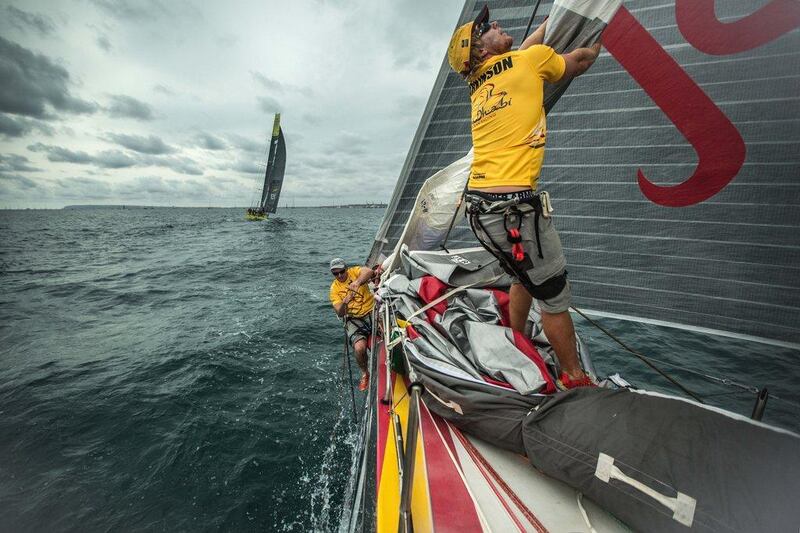
Luke Parkinson, near, and another member of the Azzam crew shown in action during the start of Leg 1 to the 2014/15 Volvo Ocean Race on Saturday in Alicante, Spain. Matt Knighton / Getty Images / Abu Dhabi Ocean Racing / Volvo Ocean Race / October 11, 2014
We've had a lot of coverage lately of the 2014/15 Volvo Ocean Race in the build-up to its start on Saturday.
We'll have plenty more over the next nine months as the Abu Dhabi Ocean Racing boat, the Azzam , and six other yachts traverse 38,739 nautical miles around the globe along nine different legs that will take the sailors everywhere from South Africa to Abu Dhabi to China to, finally, Sweden.
To help give an understanding of what those sailors are actually out there doing, we provide the below explainer:
Skipper (the boss): Is the team manager, captain, chief executive and ultimately decision maker on strategy and tactics, working in tandem with the navigator.
Nagivator (the nerd): Gets the boat from point-to-point as fast as possible, using wind and current. Has lots of hardware and software and is a meteorology expert.
Trimmer (the power): Trims the sails and responsible for boat speed. Keeps a fast sail shape, works with the driver and other trimmers to reach the goals set by the skipper and navigator.
Driver (the pilot): Has the skill to steer boat fast in all conditions for long periods. Knows how to surf the waves and keep the boat racing fast, sailing on the edge in tough conditions.
Bowman (the acrobat): Works at the bow – the wettest, coldest and most exposed end of the boat. Changes sails or helps with manoeuvres. Fast, agile and sometimes a bit masochistic.
Pitman (the pivot): Is the lynchpin at the centre of every operation. Choreographs the manoeuvres, controls the haylards lines and coordinates between the drivers and the bow team.
Boat captain (the repairman): Makes sure the boat is in optimum condition throughout the race and manages maintenance and repairs onboard. Usually from an engineering background.
Watch leader (the motivator): Is responsible for one "watch" – a group of sailors working together on deck. Makes sure that the right people are doing the right job at the right time.
Onboard reporter (the storyteller): Captures and delivers the stories and action while at sea. Not allowed under any circumstance to take any part in sailing.
Follow us on Twitter @SprtNationalUAE

Better Sailing
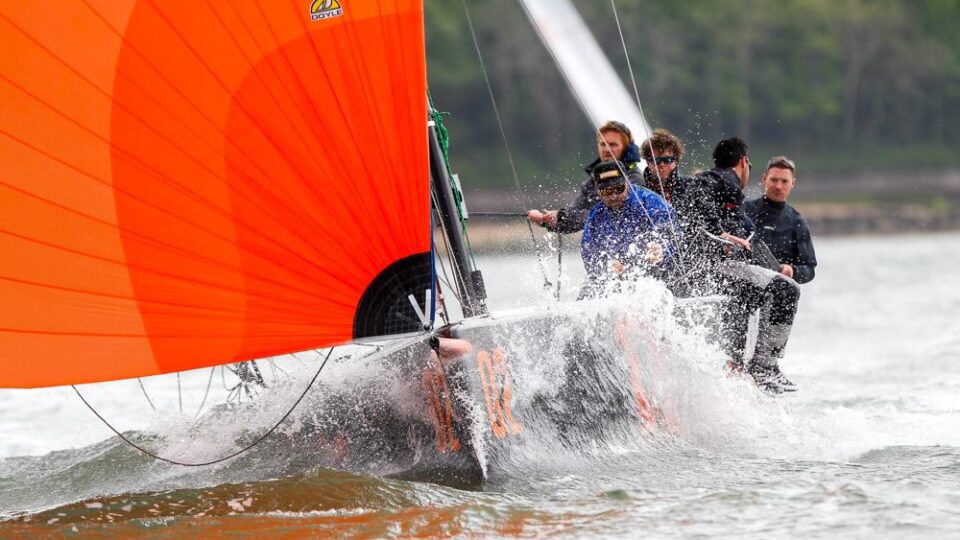
Sailing Crew Roles and Names
The skipper is responsible for the safety of the yacht and the crew’s welfare. However, sailing a boat successfully requires teamwork from the skipper and the crew. This will ensure that all maneuvers—such as leaving a mooring, hoisting sails, changing tacks, reefing, or entering a marina—can be completed with maximum enjoyment and minimum stress.
Boat Captain/Skipper
It may come as a shock, but the skipper is not necessarily the helm. This crew member must ensure that the boat is ready for sailing. He or she needs to make sure that all members of the crew are accounted for. They also need to make sure that food and fuel are sufficient, and sails are ready for hoisting. The skipper is in charge of keeping communications open onboard and help other crew members if needed. Also, they are usually responsible for talking the whole crew through maneuvers as they are about to happen and making sure that all crew members are ready.
What Makes A Good Skipper?
- Responsibility : The skipper is responsible for all aspects of the running of the yacht, its safety, and the crew’s wellbeing.
- Skills : He or she should be comfortable with sailing and navigation skills, inspire confidence in their crew, and be a good communicator.
- Delegation : A good skipper should keep on top of all his or her duties and give the crew tasks that are appropriate to their experience.
- Patience : He or she should be patient with inexperienced crew members and be able to run the yacht with a light touch while retaining respect and authority.
- Briefing : It is the skipper’s role to plan the passage in detail before setting sail.
- Involvement : A good skipper will also encourage the crew to get involved in passage planning and navigation and will always listen to their opinions.
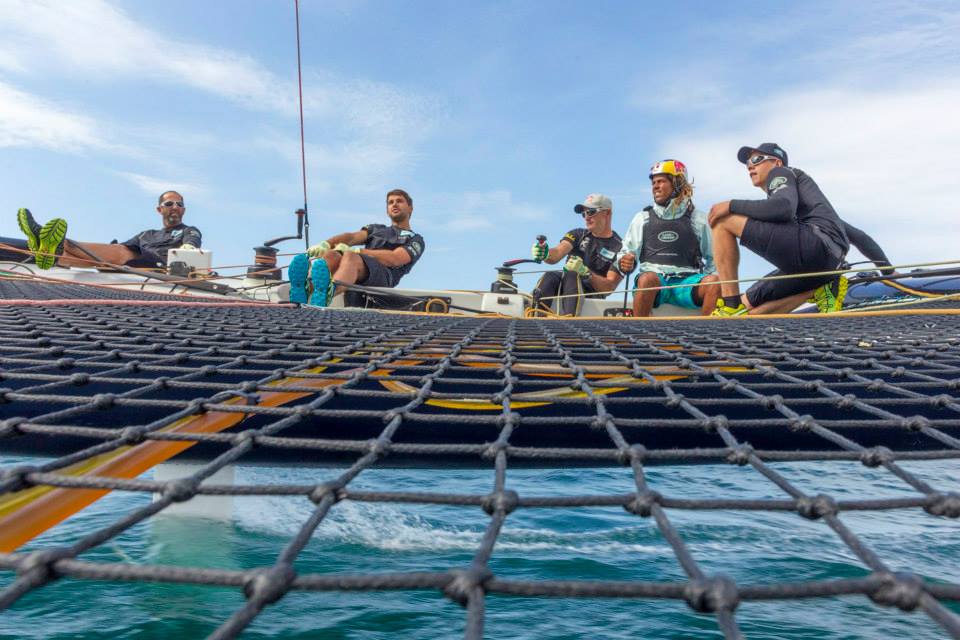
Tactician
The tactician’s role is to get the boat around the racecourse as fast as possible. For that, he needs to take into account the wind, tide, and other competitors, as well as the crew’s ability. They also need to make sure that the boat has the correct course. In short, the tactician is the brains of the sailboat. The tactician must communicate with the helm and skipper to run through maneuvers.
The Helm (Driver)
The Helm is often mistakenly perceived as the skipper. This crew role is to steer the boat where the tactician says and to keep sailing as fast as possible. The helm is also helping with other tasks, but they must focus on the job at hand as much as possible. The helm and the tactician must be in close communication with each other.
Head Sail Trimmers
This crew role is for two members, one who will cut release the sail when going through the tack while the other pulls in the full sail. The crew member releasing can then assist with tailing the sail or trimming it – which is a good example of teamwork. Also, the trimmer should keep adjusting the sail, depending on the point of sail, and should be very focused on that task. Also, the trimmers are in charge of trimming the spinnaker sail and guy when going downwind. Main communication is kept between each other, boat captain and tactician. Pre-start these guys will have a lot to do!
This crew member is in control of all sail hoists and drops depending on the wind. The bowman spends most of their time on the foredeck (the deck at the forward part of the sailboat), preparing for spinnaker hoists, gibes, and drops.
This crew member is a combination of both the bowman and mastman. They are in control of all of the running rigging which comes into the cockpit. This is a vital role and always in the middle of the action. Pitmans must keep communication is between bowman, mast man, and skipper—the eyes and ears for the foredeck crew.
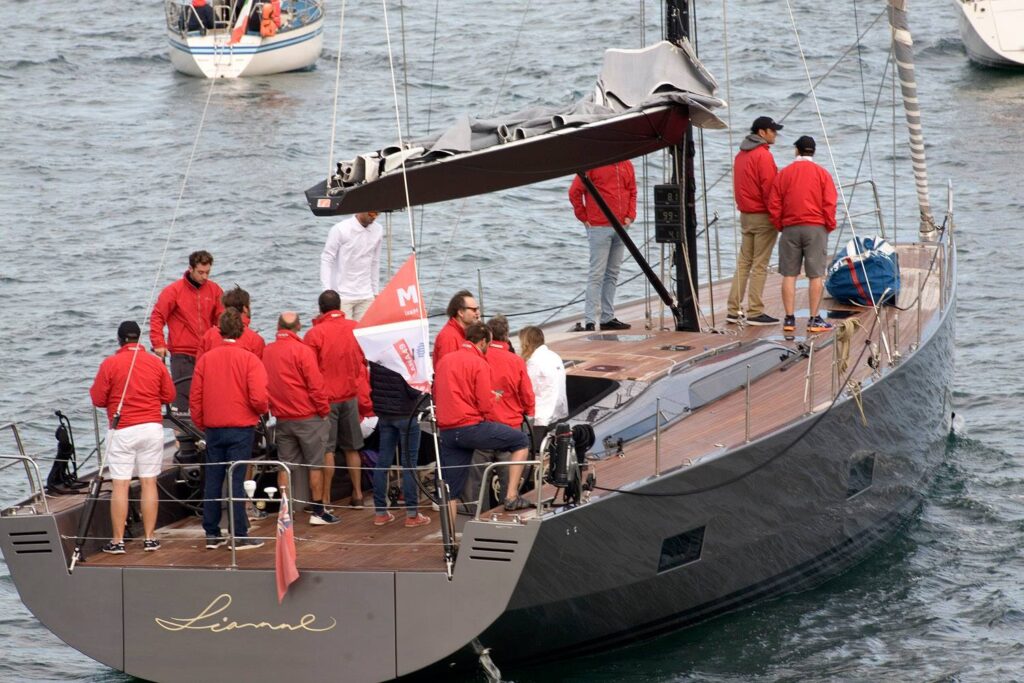
This position is reserved for the stronger members of the crew. A mastman’s foremost task is to assist with the speedy hoisting of the sails during maneuvers. The mast man and bowman go hand in hand and help each other on hoists and drops. The main communication is with the bowman, pitman, and skipper.
No sailing team is complete without its ballast crew members that help to balance the boat in order to reach its top possible speeds and maneuverability. These members of the crew are called ‘ballast’ and are key when racing for the mark. Ballast crew members have the best seat in the house.
What Makes a Good Crew Member?
- Key qualities : All crew members require a positive attitude, sense of humor, and the ability to get along with others in the confined space aboard a cruiser.
- Willingness to Learn : Good crew members are willing to learn and to take an active role in all aspects of running the yacht.
- Attentive : Diligent crew listen to the instructions carefully and ask questions if they do not understand anything.
- Working As a Team : All members of the crew must remember that they are part of a team. A happy gathering in the cockpit at the end of the passage is an indicator that each member of the crew has done their job.
Peter is the editor of Better Sailing. He has sailed for countless hours and has maintained his own boats and sailboats for years. After years of trial and error, he decided to start this website to share the knowledge.
Related Posts

Atlantic vs Pacific: Which is More Dangerous for Sailing?

Why Do Sailboats Lean?

How Does a Boat Sail Upwind? Unveiling the Mechanics of Against the Wind Sailing

How Does Sailing Work? The Physics of Sailing
- Buyer's Guide
- Destinations
- Maintenance
- Sailing Info
Hit enter to search or ESC to close.

Introduction to Sailboat Racing [Rules and Classes Explained]
True, when you first witness a sailboat race, you might believe it’s too confusing and chaotic (it can be both). But, like with anything new, you may ease into it gradually. This is intended to allow you to take several actions at once.
Racing a sailboat is a lot of fun. It blends the excitement of sailing your own boat with the raw rivalry of trying to beat another boat of comparable size. Racing also teaches you boat handling and sail trim in a manner that cruising cannot: by comparing your speed and handling to those of other boats.
Let us jump into the article to learn more about sailboat racing.
![Introduction to Sailboat Racing [Rules and Classes Explained] 1 Sailing boat with two crew members participating in the sailboat racing](https://maritimepage.com/wp-content/uploads/2023/02/Sailboat-Racing-Rules-and-Classes-2-1024x683.webp)
Basic Insights Into Sailboat Racing
Sailboat racing may be separated into three parts: start , headwind , and tailwind . During a sailboat race, it is important to ensure that the beginning of the race must be strong. The start determines the overall outcome of the race and thus is considered very crucial for the race. It brings great advantage to the competitor and this is often very underrated.
As soon as the countdown is complete, it is necessary to make sure that the competitor has crossed the starting line effectively. Generally, warnings are given at 5mins and subsequently at 4mins and 1min .
Another very important aspect to consider is the path . The competitor must be able to determine a clear path to sail through and the direction of the race course must also be perceived correctly to ensure a favorable outcome. Free lanes enable the competitor with ideal angles to the wind with which they can easily navigate without having to go against disturbed wind or wind shadows from rival boats.
![Introduction to Sailboat Racing [Rules and Classes Explained] 2 Sailboat Racing Rules and Classes - Small sailboat racing](https://maritimepage.com/wp-content/uploads/2023/02/Sailboat-Racing-Rules-and-Classes-Small-sailboat-racing-1024x819.webp)
The Starting Line
Oftentimes, the first leg of the race will be upwind, after the starting line is crossed. At this point again, it is important to note that starting strong is crucial for an upwind race as more free lanes are accessible the further ahead the competitor is in the convoy.
The necessary determinants to be noted and kept in consideration throughout the race for effective upwind sailing strategies are the following factors: wind direction, wind speed, and rivals. But the last aspect can be tricky as everyone’s goal is ultimately to win.
Competitors need to base their choices for sailing downwind on the same findings, but with a few minor variations. Being at the forefront and tagged by rivals can be seen as a mode of suffering when the competitor must keep sailing in the wind shadows of all the boats behind. Here, there’s an advantage to be thought of if the competitor can position themselves at the rear. Any lane can be chosen at proper intervals to make up for the lost ground.
However, usually, down winds result in shorter wins and losses than up winds . This is because there is less transverse separation during down winds when compared to up winds.
![Introduction to Sailboat Racing [Rules and Classes Explained] 3 Sailboat Racing of the same class maneuvering near the start line](https://maritimepage.com/wp-content/uploads/2023/02/Sailboat-Racing-Rules-and-Classes-Dinghy-sailboat-racing-1024x683.webp)
Different Types of Sail Racing Classes
Sailboat racing can be done in different ways. Each race lasts for about 45min to 1hr and is conducted on a course marked by buoys mounted by the racing committee. One can also take part in “ distance races “. In this case, the “ natural ” surroundings will typically provide the race course.
The points of sail during the race depend on the predominant wind direction factors on the day of the race, which is the other major variation besides the length. While racing on the course, the race committee places the buoys in such a manner that the race course is adapted to the wind , this mostly enables the competitors to accurately identify which sail has to be deployed for the upcoming leg .
At the race course and during the distance races, the sailboats that participate are usually of various types and are commonly very diverse. As a result, the organizing committee frequently employs intricate “ handicap ” mechanisms to even out variations across boat types . The system is often country-based and it has been developed based on the most common types of boats in a country. The RC , ORC , and IRC systems are the most widely used on an international scale .
These systems compute a factor that should be multiplied by the exact time required to sail one nautical mile using complex formulas . They are based on the dimensions of the boat’s length, weight, sail size, types, and design of the boat along with the materials used .
To find the adjusted race time that can be used to compare with other competitors, this f actor is multiplied by the amount of time it took you to complete the race and the distance of the race .
It is very necessary to remember that these systems are not entirely accurate and they cannot be completely relied on. They can only be used to a certain extent for performance comparison . Hence it is advised that one must compete in races where the competing boats are similar to accurately assess the racing skills of the competitor.
![Introduction to Sailboat Racing [Rules and Classes Explained] 4 Sailboat Racing Rules and Classes](https://maritimepage.com/wp-content/uploads/2023/02/Sailboat-Racing-Rules-and-Classes-6-1024x683.webp)
Main Rules in Sailboat Racing
These races are administered and authorized by the International Racing Rules of Sailing . It lays down rules and safety measures to sail safely across the race course along with the entire fleet, whose goal is to sail successfully during the race as well.
A rulebook is laid down with fundamental rules providing explanations and specimens about ensuring how to maintain and regulate according to the laws during a variety of circumstances that can arise between competing sailboats during the course of the race.
The most fundamental rule is that vessels with their starboard side windward must give way to vessels with their port side windward . This implies that the port-tack boat must either tack or bear away to pass behind the stern of the starboard-tack boat when two boats on opposite tacks come together . The leeward boat always has the right of way over the windward boat when there are two boats on the same tack.
![Introduction to Sailboat Racing [Rules and Classes Explained] 5 YouTube player](https://i.ytimg.com/vi/y_Au4vEg-Aw/maxresdefault.jpg)
Although this is the case, it is essential to note that the boat with the right of way must always ensure to leave other sailboats adequate space and time to avoid collision and accidents . While trying to maintain contact with other competitors, one must be very safe and secure as a significant level of rule interpretation can be enforced.
Violation of any rule can cause you to self-forfeit from the race . Hence it is advised to make amends and surrender upon having committed a conscious foul. Most admitted fouls are looked over following a penalty turn of 360 degrees or 720 degrees . Sailing instructions can be seen as a guide in all circumstances to find more detailed information about the same. A few rules can also be helpful when it comes to knowing what to be worn during the race apart from obvious determinants like the weather and climate conditions.
![Introduction to Sailboat Racing [Rules and Classes Explained] 6 Sailboat Racing Rules and Classes](https://maritimepage.com/wp-content/uploads/2023/02/Sailboat-Racing-Rules-and-Classes-4-1024x678.webp)
Main Equipment Used In Sailboat Racing
The sport of sailing is generally very physically taxing and hence requires e xtraordinary energy throughout the course of the race especially while rounding marks and sailing downwind.
When the atmospheric temperature falls due to wind-chill effects , it makes much colder winds frequently. In such circumstances, making use of a windproof outer layer will guard against the wind chill and this material is also breathable . Such measures must be ensured to avoid being cold and clammy. Wearing boots can also ensure to keep yourself warm and comfortable.
Looking into the technical aspects , sailboats need to ensure they are fully equipped with communication and navigation devices such as VHF, GPS, Sat Phones , and so on.
![Introduction to Sailboat Racing [Rules and Classes Explained] 7 Sailboat Racing - Volvo Ocean Racing Sailboat](https://maritimepage.com/wp-content/uploads/2023/02/Sailboat-Racing-Volvo-Ocean-Racing-Sailboat-1024x682.webp)
Different Types Of Sailboat Races
Sailboat racing is a diverse and dynamic sport that encompasses a wide range of different race types , each with its own unique rules, tactics, and strategies . Understanding the different types of sailboat races is crucial for sailors looking to compete at a high level and succeed in this exciting sport.
One of the most common types of sailboat racing is fleet racing, which involves a large number of sailboats competing in a single race. In fleet racing, the sailboats start together and sail a predetermined course, with the first boat to cross the finish line being declared the winner. Fleet racing often requires a high degree of tactical maneuvering, as sailors must navigate around other boats and adjust their tactics to account for wind shifts and other factors.
Another popular type of sailboat racing is match racing, which involves two sailboats competing head-to-head in a series of races. In match racing, the emphasis is on tactical maneuvering and outsmarting your opponent, rather than simply being the fastest boat on the course. Match racing typically involves a complex set of rules and regulations governing how boats can interact with each other on the course, and sailors must be highly skilled at reading wind shifts, controlling their boats, and outmaneuvering their opponents.
![Introduction to Sailboat Racing [Rules and Classes Explained] 8 sailboats with black sails](https://maritimepage.com/wp-content/uploads/2023/06/sailboats-with-black-sails.jpg)
Team racing is another type of sailboat racing that involves multiple sailboats competing against each other in a team format. In team racing, each team consists of multiple boats, and the team with the best overall performance across all of its boats is declared the winner. Team racing often requires a high degree of coordination and strategy, as sailors must work together to achieve a common goal and coordinate their tactics to maximize their chances of success.
In addition to these main types of sailboat racing, there are also a variety of specialized race types that are popular in different parts of the world . For example, ocean racing involves sailing across the open ocean over long distances and requires a high degree of skill and endurance. Inshore racing , on the other hand, takes place in protected bays and harbors and often involves short, fast races with frequent wind shifts and other challenges.
Regardless of the type of sailboat racing, one thing remains constant: the need for skilled and experienced sailors who can navigate their boats through a wide range of conditions and challenges. Whether you’re a seasoned veteran or a beginner just getting started, mastering the different types of sailboat racing can be a highly rewarding and exhilarating experience, and can lead to a lifetime of excitement and adventure on the water.
![Introduction to Sailboat Racing [Rules and Classes Explained] 9 Sailboat Racing Rules and Classes](https://maritimepage.com/wp-content/uploads/2023/02/Sailboat-Racing-Rules-and-Classes-5-1024x683.webp)
Classes Of Sailboats Commonly Used In Racing
Sailboat racing is a highly competitive and dynamic sport that encompasses a wide range of different classes of sailboats, each with its own unique characteristics, strengths, and weaknesses. Understanding the different classes of sailboats used in racing is crucial for sailors looking to compete at a high level and succeed in this exciting sport.
One of the most common classes of sailboats used in racing is the dinghy , which is a small, lightweight boat typically sailed by one or two people. Dinghies are highly maneuverable and responsive and can be sailed in a wide range of conditions, from light winds to strong breezes. Popular dinghy classes include the Laser , the 420 , and the Optimist , each of which has its own unique rules and specifications.
Keelboats are another popular class of sailboats used in racing, and are typically larger and heavier than dinghies, with a fixed keel that helps to provide stability and control. Keelboats come in a wide range of sizes and designs, from small one-design boats like the J/24 to larger performance-oriented boats like the TP52. Keelboats are often sailed by a crew of several people and require a high degree of coordination and teamwork to sail effectively.
Multihulls are another popular class of sailboats used in racing and are characterized by their multiple hulls providing greater speed and stability than traditional monohull sailboats. Multihulls come in a variety of different designs and sizes, from small catamarans to large trimarans , and are typically sailed by a crew of several people. Multihulls can be highly competitive and exciting to sail, but also require a high degree of skill and experience to handle effectively.
In addition to these main classes of sailboats, there are also a variety of specialized classes that are popular in different parts of the world. For example, in Australia and New Zealand, the 18-foot skiff is a highly competitive and popular class of sailboats, characterized by its large sail area and high speed. In Europe, the Dragon is a classic one-design keelboat that has been popular for decades and is known for its elegant design and excellent performance.
Regardless of the specific class of sailboats used in racing, one thing remains constant : the need for skilled and experienced sailors who can navigate their boats through a wide range of conditions and challenges . Whether you’re racing a dinghy, a keelboat, a multihull, or some other type of sailboat, mastering the unique characteristics and challenges of your boat is key to achieving success on the water.
To become a successful sailboat racer , it’s important to not only master the technical skills needed to sail your boat effectively , but also to develop a deep understanding of the rules, tactics, and strategies that govern sailboat racing . By immersing yourself in the world of sailboat racing and learning from experienced sailors, you can build the skills and knowledge needed to succeed in this exciting and challenging sport.
![Introduction to Sailboat Racing [Rules and Classes Explained] 10 YouTube player](https://i.ytimg.com/vi/sAxD7w0lDhA/maxresdefault.jpg)
In conclusion, participating in a race can be very enjoyable in both cases. The first case is where someone is learning the art of sailing or like in the second case where one could be trying to gain some prior expertise on the sea.
If winning the race is one’s main aim then the key thing to remember is to make sure that you tack at the right moments. To trim the sails to completely catch the wind and last but not least, to communicate well with the rest of the crew.
About the author
I worked as an officer in the deck department on various types of vessels, including oil and chemical tankers, LPG carriers, and even reefer and TSHD in the early years. Currently employed as Marine Surveyor carrying cargo, draft, bunker, and warranty survey.
Leave a Reply Cancel reply
Your email address will not be published. Required fields are marked *
Save my name, email, and website in this browser for the next time I comment.
Latest posts

The Ocean Warming Effects on Marine Life
The last few decades have seen ocean temperatures rise as climate change begins to affect maritime industries worldwide. Here are the ocean warming effects on marine life seen so far.

How Do Cruise Ships Handle Hurricane Season Cruises?
Thankfully, modern cruise ships can handle a hurricane season cruise. Due to past experiences and new advancements, crews prove these boats operate well no matter the weather.

Extreme Heat Hazards Faced by Seafarers
What must sailors know to stay safe and make it back to shore healthy and happy? Here’s a closer look at the extreme heat hazards seafarers face and the precautions and procedures they must know before setting sail.
Last updated: Feb 08, 2024
Sailing Positions

Positioning in sailing has to do with where your sail is facing and how it is being affected by the wind. In order to keep direction and speed, someone must be paying attention to the speed and direction of the wind and adjusting the sail accordingly. Even a slight miscalculation could be disastrous in sailing. Below, we will take a look at the different positions, duties, and jobs one can have on a sailboat.
Table of Contents
Sailing duties, tactician/trimmer.
The people who work on a ship can differ depending on the type of ship. The crew on a crew boat consists of eight people all sitting in a row on the boat. This is different from the crew on a yacht, which includes spinnakers, helmsman, bowmen, and more. Though their duties are different, the objective of both sets of crew is to work with the wind and tides to get to the next destination as quickly and easily as possible. With a yacht, this means dealing with a sail while a crew boat needs to paddle.
While the titles and roles of the various crew members on a sailing boat may vary depending on the league, race, and type of vessel, here are a few common positions you will hear of in sailing:
A sailing tactician, also sometimes referred to as a “trimmer,” checks the wind shifts and adjusts the course of the boat accordingly . In races, their job is to guide the boat and the other crew members along the racecourse in order to get them to the finish line as fast as possible. They must take into account the angle of the sail, wind, and tide and then choose which side of the line to favor. Even a small miscalculation by a tactician can mean the end of the race for a whole team.
Trimmers are often referred to by whichever sail they are in charge of: for instance, the trimmer who works the mainsail will be referred to as the “mainsail trimmer,” while a trimmer who works the foresail will be called a “foresail trimmer.” Trimmers may also be referred to by where on the boat they are stationed (e.g. “port trimmer” and “starboard trimmer”).
A driver, also sometimes referred to as a “helmsman," keeps the boat pointed in the direction that the tactician suggests. As their name suggests, the act of keeping the point pointed in the best possible direction is known as “driving.” Drivers are also responsible for making sure a maximum safe speed is maintained throughout the duration of the race.
A mastman is the main crewmember who assists with the quick hoist of a sail during maneuvers. This sailor is typically the strongest member of the crew, because they must be able to easily move the sail during strong wind shifts. A mastman will work closely with the bowman and keep in communication with the pitman and captain.
The understudy, also known as the second officer, is the second-in-command and helps manage the crew. While the tactician or first officer is in charge of navigating the boat in the correct direction, the understudy helps manage the bridge team and makes sure the deck team is acting in accordance with the first officer’s orders. Understudies will also learn the jobs of the mastman, bowman, and pitman to fill in where necessary. Understudies are most often seen on large yachts and superyachts.
The bowman is the crew member that is in charge of the sail . This is a very important job, because once a tactician signals, a bowman must be ready immediately to angle the sail or raise/drop it at a moment’s notice. If a sail is not raised, dropped, or moved in time this can mean a drastic drift off course.
The pitman is similarly-named (and has a similar function to) the pit crew in many automobile racing sports . On a sailboat, however, the pit crew on a sailing boat is often just one person. The pitman is responsible for resolving any in-race issues with the boat that could cause a disaster or a loss while the race is underway.
Common things that the pitman may have to deal with are unexpected knots or entanglements in the rigging and ropes of the vessel, which can make it hard to raise or shift the sails as needed. Pitmen will also prefeed sheets and “run the tapes” on sails that are off the breeze to make sure that they do not get tangled. The pitman is also commonly charged with raising and lowering sails when the boat is rounding a mark.
What are the positions in sailing?
In sailing, position titles can vary based on what type of sailing you are performing, but the most common positions are tacticians/trimmers, a driver, a mastman, an understudy, a bowman, and a pitman. These positions divide up the various roles and duties on a sailboat, including guiding the ship, raising and lowering sails, undoing tangles and knots, steering, and calling maneuvers.
What is a sailing team called?
A sailing team’s name can differ among boat types. Normally they are called a “crew,” specifically on crew boats where the members are very close together and are forced to work as a team more than any other boat. Teams in a competition can also just be called “sailing teams” at international competitive events such as the Olympics .
What are the positions on a yacht?
Yacht crew positions include pitman, mainsheet trimmer, bowman, helmsman, spinnaker guy trimmer, and spinnaker sheet trimmer. The crew positions on a yacht are more complicated than that of a crew boat or a smaller sailing boat. While there are only six members, as compared to eight on a crew boat, they have more complicated responsibilities dealing with the mainsail as well as other factors involved in a yacht.
Pages Related to Sailing Positions
- Top 10 Sailing Video Games
- Sailing Equipment List
- What Are The Rules Of Sailing?
- Sailing Basic Rules For Kids
- Top 10 Sailing Movies
- Sailing Basics

- Find Crew
- Find Boats

- How It Works

We welcome you to our free crewing service, which is designed to connect amateur and professional crew with sailing vessels and motor vessels worldwide. We aim to provide you with the means to find exactly what you're looking for and allow you to interact with like minded people. Good luck!
Tell Me How It Works
- Professional
Crew Recruitment
Find Professional Crew
Reach 1000's of candidates worldwide! FREE of charge! Crewbay ranks applicants based on their suitability for your requirements. Short listing crew has never been easier. Find the perfect match today.
Jobs Worldwide
Create your FREE Crewbay profile and apply for jobs today. Explore the global jobs list and find your perfect job. New jobs are listed daily and updated regularly with our check-in system, ensuring we don't waste your time.
- Recreational
Global Crewing
All Levels Of Crew
Connect with all kinds of crew, free of charge. Whether you're looking for a helping hand, racing crew, delivery crew or whatever. Crewbay offers crew at all levels, worldwide. You will find all skill levels in far flung corners of the world, all with a close ephinity for the ocean.
Boats Worldwide
Post your profile advert free of charge! Search a wide variety of vessels, offering a multitude of crewing opportunites worldwide. From cruising, day sailing, deliveries, racing, island hopping, coastal sailing, eco projects and lots more. Contact skippers and captains direct.
The #1 Crewing Platform
Since its establishment in 2004, Crewbay has been at forefront of online crewing.
Professional Crew
Recreational Crew
Professional Jobs
Recreational Boats
Sign Up - It's Free
Cookie policy: By using this website you agree to our privacy policy . OK

Yacht Crew Wanted
Amateur and professional yacht crewing positions available worldwide, from daysailing to transocean for all experience levels.
Search sailing opportunities
For yacht crew
It’s free for everyone to browse though all of our current sailing opportunities. Become a member to contact yacht owners and join their crew.
For yacht owners
Registration and posting is free if you are looking for a skipper or crew. Find amateur and professional crew for short or long term voyages.
Featured sailing opportunities
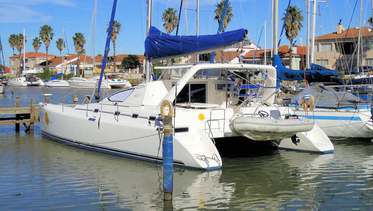
Albania to Tunisia
Boat type: Admiral 38' Sailing Catamaran
Location: Southern Albania
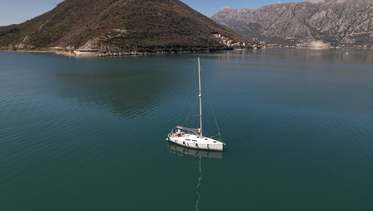
Americas Cup (AC37) Barcelona 2024
Boat type: Hanse 385
Location: Tivat Montenegro
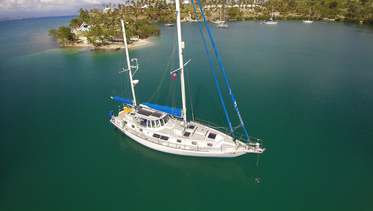
Crew wanted for Mediterranean and beyond
Boat type: Gulfstar 50 MK ll Ketch totally rebuilt 2015
Location: Italy, Spain, Morocco, France, UK
Coastal yacht cruising
Professional sailing jobs, ocean sailing voyages, yacht delivery crew, worldwide opportunities, varied vessel types, all experience levels, mile building voyages, short notice sailing, environmental & wildlife vessels, we are recommended by.

Crewseekers notices
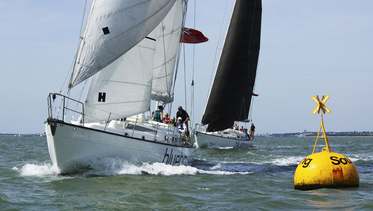
What makes an RYA Yachtmaster?
James Stevens, former Chief Examiner of the RYA tell us.
Skipper for Private Catamaran Charters in Malta
More information

Day Skipper & Yachtmaster theory courses - 20% off
Online RYA theory courses with a great discount courtesy of Crewseekers.
we love sailing as much as you do
Crewseekers is run by experienced, professional sailors offering a friendly and helpful service to yacht crew and owners. We are the original yacht crew introduction agency – established for over 25 years, offering amateur and professional sailing opportunities throughout the world.

Study at Cambridge
About the university, research at cambridge.
- For Cambridge students
- For our researchers
- Business and enterprise
- Colleges and Departments
- Email and phone search
- Give to Cambridge
- Museums and collections
- Events and open days
- Fees and finance
- Postgraduate courses
- How to apply
- Fees and funding
- Postgraduate events
- International students
- Continuing education
- Executive and professional education
- Courses in education
- How the University and Colleges work
- Visiting the University
- Annual reports
- Equality and diversity
- A global university
- Public engagement
Crews announced for The Boat Race 2024
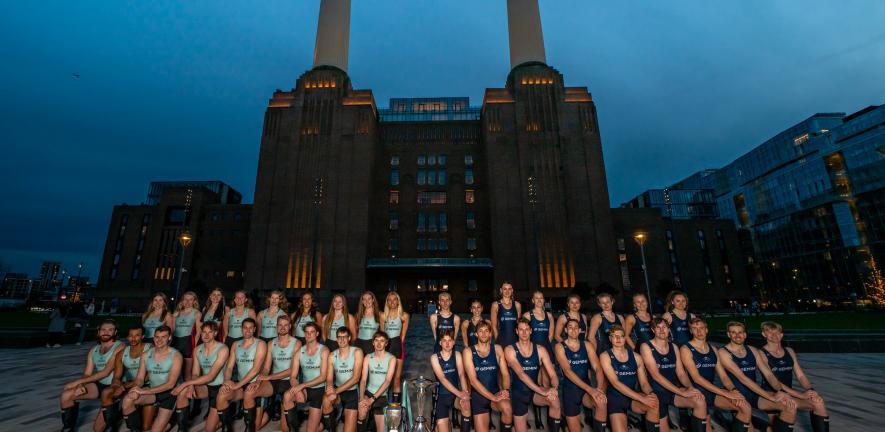
The Cambridge and Oxford crews for The Boat Race 2024 have been officially unveiled at a crew announcement held at the iconic Battersea Power Station.
The 36 student rowers who have won a place in the Blue Boat were announced at the event which was held in public for the first time in the Boat Races’ history.
The crews for the Women’s Race were unveiled first of all, and the Cambridge crew will feature two returning faces, Jenna Armstrong and Carina Graf, but for the others it is their first time in the coveted Blue Boat.
The crews for the Men’s Race were then unveiled, and this year there are five returning Blues: Seb Benzecry, Noam Mouelle, Tom Lynch, Luca Ferraro and Matt Edge.
The full line-ups are as follows:
Cambridge Women’s Blue Boat
Cox: Hannah Murphy (Girton - MPhil Health, Medicine and Society) Stroke: Megan Lee (Lucy Cavendish - MPhil Management) 7: Iris Powell (Churchill - BA Natural Sciences) 6: Carys Earl (Gonville and Caius - BA Medicine) 5: Carina Graf (Emmanuel - PhD Neuro Sci) 4: Jenna Armstrong (Jesus - PhD Physiology) 3: Clare Hole (St Catharine’s - MPhil Population Health Sciences) 2: Jo Matthews (St John’s - BA Medicine (Clinical)) Bow: Gemma King (St John’s - MRes + PhD Stem Cell Biology)
Cambridge Men’s Blue Boat
Cox: Ed Bracey (Wolfson - MPhil Economics) Stroke: Matt Edge (St Catharine’s - PhD Chem Eng) 7: Luca Ferraro (King’s - BA Classics) 6: Tom Lynch (Hughes Hall - PhD Engineering) 5: Kenny Coplan (Hughes Hall - MPhil History of Art) 4: Gus John (Wolfson - MPhil Medieval History) 3: Thomas Marsh (St John’s - PhD Physics) 2: Noam Mouelle (Hughes Hall - PhD Astrophysics) Bow: Seb Benzecry (Jesus - PhD Film Studies)
Asked by the host of the event, BBC Sport commentator Andrew Cotter, about whether there was a challenge integrating new faces into the Blue Boat, Cambridge Women’s Coach Patrick Ryan said: “Actually there are no new faces, every single one of them is a returner – just new Blues!”
The Cambridge Men’s and Women’s clubs unified in 2020 and Patrick added: “As we’ve become one club, we’ve learned to share more information and work together, hopefully for the betterment of the athletes here tonight.”
Cambridge Men’s Coach Rob Baker was then asked whether the number of returning Blues in the Men’s Boat would give Cambridge an advantage.
“Every year is different, every year is a challenge,” said Rob. “It’s great to have guys that have won the race and been through the process before, but yes it’s always a big challenge but we are up for it”.
It was the first time that Battersea Power Station, which famously featured on a Pink Floyd album cover, has hosted the crew announcement event. Siobhan Cassidy, Chair of the Boat Race Company Limited, said the venue was appropriate, given that it was designed by Sir Giles Gilbert Scott, who was also behind iconic buildings at Cambridge and Oxford, including Cambridge University Library.
She added: “[The Boat Race] is the ultimate British tradition, which draws on its heritage yet, with boats full of young students, it is very much an event that looks to the future.
“These young people have a unique opportunity to take to the water on such a high profile day. In order to get there they have made incredible choices. They have combined a full-time rigorous academic schedule with training and racing throughout the year - so let’s not underestimate how impressive these young people really are”.
The Gemini Boat Race 2024 takes place in Putney, London, on Saturday 30 March – with the Women’s Race starting at 14:46 BST and the Men’s Race at 15:46 BST – renewing an intense rivalry which stretches back nearly 200 years. The event will be broadcast live on BBC One from 14:00 BST.
Last year saw Cambridge University win both the men’s and women’s races, leaving the overall records as 86-81 in the favour of Cambridge Men’s and 47-30 in the favour of Cambridge Women’s.

Media enquiries
The Cambridge and Oxford crews for The Boat Race 2024
Credit: BRCL/Row360
Search news
Sign up to receive our newsletter.
The University's news digest summarises news from and about the University of Cambridge. Enter your email address, confirm you are happy to receive our emails and then select 'Subscribe'.
I wish to receive the University's news digest by email.
The University of Cambridge will use your email address to send you our University news digest email up to three times per week. We are committed to protecting your personal information and being transparent about what information we hold. Please read our email privacy notice for details.
Find out more
- Cambridge University Boat Club
- Boat Race Company Limited
Connect with us

© 2024 University of Cambridge
- Contact the University
- Accessibility statement
- Freedom of information
- Privacy policy and cookies
- Statement on Modern Slavery
- Terms and conditions
- University A-Z
- Undergraduate
- Postgraduate
- Cambridge University Press & Assessment
- Research news
- About research at Cambridge
- Spotlight on...
- Bahasa Indonesia
- Slovenščina
- Science & Tech
- Russian Kitchen
Cruising the Moskva River: A short guide to boat trips in Russia’s capital

There’s hardly a better way to absorb Moscow’s atmosphere than on a ship sailing up and down the Moskva River. While complicated ticketing, loud music and chilling winds might dampen the anticipated fun, this checklist will help you to enjoy the scenic views and not fall into common tourist traps.
How to find the right boat?
There are plenty of boats and selecting the right one might be challenging. The size of the boat should be your main criteria.
Plenty of small boats cruise the Moskva River, and the most vivid one is this yellow Lay’s-branded boat. Everyone who has ever visited Moscow probably has seen it.

This option might leave a passenger disembarking partially deaf as the merciless Russian pop music blasts onboard. A free spirit, however, will find partying on such a vessel to be an unforgettable and authentic experience that’s almost a metaphor for life in modern Russia: too loud, and sometimes too welcoming. Tickets start at $13 (800 rubles) per person.
Bigger boats offer smoother sailing and tend to attract foreign visitors because of their distinct Soviet aura. Indeed, many of the older vessels must have seen better days. They are still afloat, however, and getting aboard is a unique ‘cultural’ experience. Sometimes the crew might offer lunch or dinner to passengers, but this option must be purchased with the ticket. Here is one such option offering dinner for $24 (1,490 rubles).

If you want to travel in style, consider Flotilla Radisson. These large, modern vessels are quite posh, with a cozy restaurant and an attentive crew at your service. Even though the selection of wines and food is modest, these vessels are still much better than other boats.

Surprisingly, the luxurious boats are priced rather modestly, and a single ticket goes for $17-$32 (1,100-2,000 rubles); also expect a reasonable restaurant bill on top.
How to buy tickets?
Women holding photos of ships promise huge discounts to “the young and beautiful,” and give personal invitations for river tours. They sound and look nice, but there’s a small catch: their ticket prices are usually more than those purchased online.
“We bought tickets from street hawkers for 900 rubles each, only to later discover that the other passengers bought their tickets twice as cheap!” wrote (in Russian) a disappointed Rostislav on a travel company website.
Nevertheless, buying from street hawkers has one considerable advantage: they personally escort you to the vessel so that you don’t waste time looking for the boat on your own.

Prices start at $13 (800 rubles) for one ride, and for an additional $6.5 (400 rubles) you can purchase an unlimited number of tours on the same boat on any given day.
Flotilla Radisson has official ticket offices at Gorky Park and Hotel Ukraine, but they’re often sold out.
Buying online is an option that might save some cash. Websites such as this offer considerable discounts for tickets sold online. On a busy Friday night an online purchase might be the only chance to get a ticket on a Flotilla Radisson boat.
This website (in Russian) offers multiple options for short river cruises in and around the city center, including offbeat options such as ‘disco cruises’ and ‘children cruises.’ This other website sells tickets online, but doesn’t have an English version. The interface is intuitive, however.
Buying tickets online has its bad points, however. The most common is confusing which pier you should go to and missing your river tour.

“I once bought tickets online to save with the discount that the website offered,” said Igor Shvarkin from Moscow. “The pier was initially marked as ‘Park Kultury,’ but when I arrived it wasn’t easy to find my boat because there were too many there. My guests had to walk a considerable distance before I finally found the vessel that accepted my tickets purchased online,” said the man.
There are two main boarding piers in the city center: Hotel Ukraine and Park Kultury . Always take note of your particular berth when buying tickets online.
Where to sit onboard?
Even on a warm day, the headwind might be chilly for passengers on deck. Make sure you have warm clothes, or that the crew has blankets ready upon request.
The glass-encased hold makes the tour much more comfortable, but not at the expense of having an enjoyable experience.

Getting off the boat requires preparation as well. Ideally, you should be able to disembark on any pier along the way. In reality, passengers never know where the boat’s captain will make the next stop. Street hawkers often tell passengers in advance where they’ll be able to disembark. If you buy tickets online then you’ll have to research it yourself.
There’s a chance that the captain won’t make any stops at all and will take you back to where the tour began, which is the case with Flotilla Radisson. The safest option is to automatically expect that you’ll return to the pier where you started.
If using any of Russia Beyond's content, partly or in full, always provide an active hyperlink to the original material.
to our newsletter!
Get the week's best stories straight to your inbox
- What to do in Moscow City, if you’re not mega-rich
- Moscow after dusk: 10 places to drink, dance, and groove
- 5 things you must do in Moscow in 2018 between football matches (or without them)
- Sandwiched between Moscow and St. Petersburg: How to spend a perfect weekend in Tver
- 24 or 48 hours in Moscow: Where to go and what to do in 2019
This website uses cookies. Click here to find out more.
THE 10 BEST Moscow Boat Rides & Cruises
Boat rides & cruises in moscow.
- Boat Rentals
- Scuba & Snorkeling
- Fishing Charters & Tours
- Water Sports
- Stand-Up Paddleboarding
- Surfing, Windsurfing & Kitesurfing
- Kayaking & Canoeing
- Waterskiing & Jetskiing
- Parasailing & Paragliding
- River Rafting & Tubing
- Dolphin & Whale Watching
- Speed Boats Tours
- Submarine Tours
- 5.0 of 5 bubbles
- 4.0 of 5 bubbles & up
- 3.0 of 5 bubbles & up
- 2.0 of 5 bubbles & up
- 3rd Transport Ring (TTK)
- District Central (TsAO)
- Garden Ring
- District Northern (SAO)
- Good for Big Groups
- Good for Couples
- Good for a Rainy Day
- Budget-friendly
- Good for Kids
- Hidden Gems
- Honeymoon spot
- Good for Adrenaline Seekers
- Adventurous
- Things to do ranked using Tripadvisor data including reviews, ratings, photos, and popularity.

1. Flotilla Radisson Royal

2. Moscow River Boat Tours

3. Sup-Club

4. Akvanavt Diving Centre

5. Diving Center Crocus City Oceanarium

6. CheapRussia Tours
7. Kite School Kiteclass

8. SUP Center
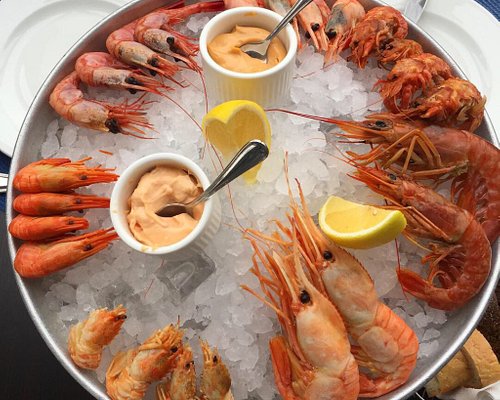
9. Erwin. Reka
10. Easy Russia Tour Guide
11. Lovely Russia Tours

13. Capital River Boat Tours - Moscow Centre

14. Alfa Centr
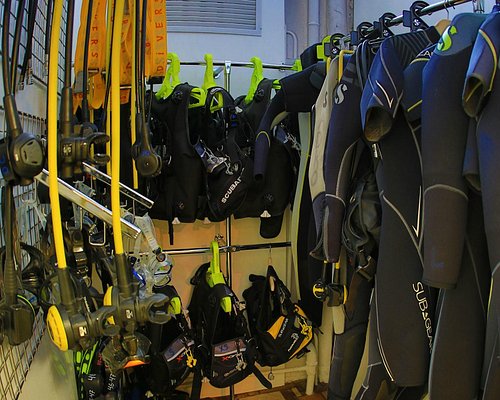
15. Diving Club Divers
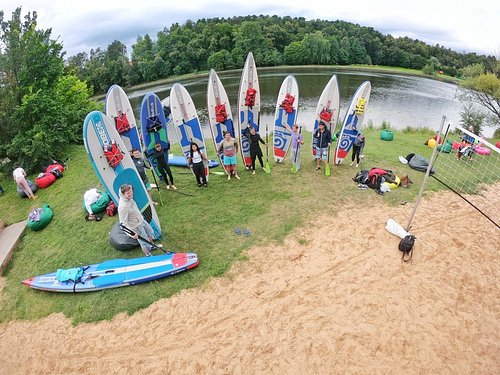
16. Sup Outdoor

17. MORE MOSCOW
19. Soho Sailing Style

20. Diving Center Crocodile

21. Dive-Project

22. Mosparokhodstvo
24. Kosinskiy Children Marine Club

25. Kayak Moscow
26. DIVECLUB CHE

27. FLOW Moscow

28. Moswake

29. Morskiye Volki

30. S-cruises
What travelers are saying

- CheapRussia Tours
- Easy Russia Tour Guide
- Lovely Russia Tours
- MORE MOSCOW
- Insider Moscow Tours
- Flotilla Radisson Royal
- Moscow River Boat Tours
- Capital River Boat Tours - Moscow Centre
- Diving Center Crocus City Oceanarium
- Formula 1 All Series NASCAR Cup IndyCar Formula 1 MotoGP Formula E IMSA WEC NASCAR XFINITY Indy NXT NASCAR Truck FIA F2 Supercars WRC
- NASCAR Truck
- NASCAR Euro
- NASCAR Mexico
Sign up for free
Get quick access to your favorite articles
Manage alerts on breaking news and favorite drivers
Make your voice heard with article commenting.
Motorsport prime
Marussia f1 team return to russia for moscow city racing, andy webb, marussia ceo: we have seen the strength of that support again in the last few days following the very pleasing announcement of our new powertrain partnership with scuderia ferrari..

Max Chilton, Marussia F1 Team MR02
Despite the three-week gap between Rounds 9 and 10 of the FIA Formula 1 World Championship® the Marussia F1 Team has had little time to draw breath, embarking on a series of promotional events to reward the loyal support of its fans.
This week, while the race team conduct the Young Driver Test at Silverstone, the demonstration team are heading ‘home’ to Russia for their second year of participation in ‘Moscow City Racing’.
The event takes place on 20 and 21 July, with the demonstration runs scheduled for Sunday 21 July on the streets surrounding the Kremlin and the ‘paddock’ located close to Red Square.

Photo by: XPB Images
Visitors will also be given the opportunity to enter the inner-sanctum - the Paddock - to soak up the atmosphere and see for themselves the intricacies of Formula 1 design and engineering.
Aside from his on-track duties, Max will participate in a range of promotional activities, taking time out to mingle with the Russian fans during autograph sessions and photo opportunities.
Supporting the Marussia F1 Team over the weekend are main event partner Liga Stavok along with additional partners Instaforex, QNet and RBC.
Max Chilton: “There have been quite a few ‘firsts’ for me in my debut season in Formula One - new racetracks, new cities, meeting new fans - and Moscow City Racing will be my very first visit to Russia. I can’t wait. From what I hear from previous events, the demonstration runs are a fantastic spectacle and the crowd is huge and very supportive.
That’s nice, because we are the only Anglo-Russian team and it is good to keep building on their love of Formula 1 before Russia gets its very own race next year in Sochi. I’m really excited about making the trip and I hope to meet as many of the Russian fans as possible, when I’m not driving through their streets!”
Andy Webb, CEO: “The Marussia F1 Team are very excited to be returning to Russia to participate in the Moscow City Racing event for a second successive year. As the only Anglo-Russian team in Formula One, this event has become a very important date in our Team calendar, as we continue our determined efforts to bring more of F1 to Russia and more of Russia to F1.
This is our opportunity to get closer to the fans and for them to see our car and drivers right on their doorstep, not just on the TV. Our drivers Jules Bianchi and Max Chilton are enjoying a flying start to their exciting debut seasons and the Marussia F1 Team really is going from strength to strength now, making good progress towards its long-term ambitions.
We look forward to a fantastic crowd in Moscow and to expressing our thanks for all the incredible support we receive ‘back home’ in Russia. We have seen the strength of that support again in the last few days following the very pleasing announcement of our new powertrain partnership with Scuderia Ferrari. It seems the fans share our optimism for the future of the Marussia F1 Team.”
Marussia F1 Team
Be part of Motorsport community
Share or save this story.
Carlin committed to IndyCar, hopes to run two cars in 2022

Chilton, Carlin to miss GP of Indianapolis

Carlin confirms Chilton’s IndyCar schedule for 2021

Vettel sent Bearman 'good luck' message ahead of Saudi F1 debut

How Bearman's F1 debut will help Mercedes on its Hamilton replacement call

Vasseur “optimistic” on Sainz F1 return ahead of decision next week
Latest news

Why Mohammed Ben Sulayem believes his mission to create a strong FIA is so important

Sebring 12h: Bourdais grabs the lead after the opening hour

Aston Martin: "Old fox" Alonso brings F1 value beyond pure performance

Sao Paulo E-Prix: Porsche's Wehrlein beats Vandoorne to pole by fractions

The Beckham clues as to where Verstappen and Red Bull are heading

Was Magnussen's role as Hulkenberg's helper in Saudi Arabian GP unsportsmanlike?
Subscribe and access Motorsport.com with your ad-blocker.
From Formula 1 to MotoGP we report straight from the paddock because we love our sport, just like you. In order to keep delivering our expert journalism, our website uses advertising. Still, we want to give you the opportunity to enjoy an ad-free and tracker-free website and to continue using your adblocker.
You have 2 options:
- Become a subscriber.
- Disable your adblocker.
Subscribe to our newsletter
Receive exciting Motorsport news, updates, and special offers straight to your inbox.
Get the app
Social media.
- Motorsport.tv
- Motorsportjobs.com
- Autosport.com
- Motorsportstats.com
- Advertise with Motorsport.com
- Contact the team
- [email protected]
- 5972 NE 4th Avenue Miami, FL 33137 USA
- Terms & Conditions
- Cookie policy
- Privacy Policy
- Cookie Settings
Visit motorsport.com as usual with advertising and tracking. You can revoke your consent at any time via the data protection page. 1
Use motorsport.com without any advertising banners, personalized tracking and commercials for a small fee.
More information about advertising and tracking in our Data protection notice , the List of our partners and in Data protection information center .
Already a subscriber? Log in here
- Terms of Use
- Data Protection
Popular series
SINGLE-SEATERS
- Go to all series listing
- About Edition
- Membership agreement
- Privacy policy
Select edition
Current edition, other editions.
- Deutschland
- Magyarország
- الشرق الأوسط
- Latinoamérica
- Switzerland de fr it

IMAGES
VIDEO
COMMENTS
August 30, 2022. The success of a racing sailboat depends entirely on the ability of each person on the boat to know and execute their role in high-pressure situations. While boat-dependent, all positions are some combination of the responsibilities of driver, bow, tactician, trimmer, and pit. The driver makes the final decisions and steers ...
Read on to learn what your crew wants you to remember each race! Photo by Sharon Green. While it's important to master your position on the boat, it's equally as important to understand what's going on in other domains and what you can do to make your teammates' life easier and help the boat sail smoothly. We reached out to a mix of ...
Yacht Racing; Guide to Different Crew Positions on a Race Yacht. August 9, 2018. Facebook. Twitter. Linkedin. Email. Print. ... News, stories, tips and resources on everything sailing and yacht racing. This site contains a compilation of articles and resources written by the team at MySail as well as news submitted from clubs, companies and ...
Position Playbook. A position playbook provides step-by-step instructions for all crew positions and each key manoeuvre on your yacht. This is also a useful tool to send to new crew before they arrive for their first race or training day, so they can arrive already up-to-speed and ready to do their job. A good exercise is to create your yacht ...
The skipper's duties include: Planning and executing the sailing itinerary. Ensuring the boat is properly maintained and equipped. Making decisions regarding navigation, weather, and safety. Managing the crew and assigning tasks. Ensuring all crew members are trained and competent in their roles.
The F50 is one of the most advanced sail racing boats in the world, and it takes five world-class athletes each performing highly specialized roles to race o...
Define Crew Positions. Each crew position has a specific responsibility during each evolution or maneuver. First, figure out the correct number of crew, define each position, and then sail with a full complement of crew every time you race. Once positions are defined, you can plug new people into a specific position that has clearly defined ...
The crew tends to make a lot of decisions without the need of the skipper, but only if it makes practical sense at the time. A strong crew with a lot of knowledge is arguably the best bet for success when racing sailboats and should not be looked at as an accessory, but rather an important component. Fundamentals in Sailboat Racing
If the skipper is not proficient in all positions on the boat and is having trouble training crew to work seamlessly together, getting a pro onboard for some training sessions may be a good investment of money and time. As the author's sailboat racing crew knows, a team who collaborates well has more fun. Photo by Mischelle Wilbricht
The basic Racing Rules of Sailing are designed to keep boats from having a collision. The starboard-tack boat always has the right of way over the port-tack boat. ... Keep the crew in their racing positions. Approach the finish line on starboard tack when possible so you have right of way on other boats that are finishing at the same time ...
Here are eight tips for the first time sailboat racer that will make the challenge a bit more manageable and a little less daunting: Choose the right race. Ask around and pick a race that's not ultra competitive. There are always races that are more mellow than others. Choose one that is centered around fun, maybe a benefit regatta or a ...
Crew Positions on the Boat There are generally six to eight crew positions while racing a sailboat. However, one person may do more than one job, so the boat doesn't need to be crowded: Most racing crews have six members. The skipper is in charge of the safety of the (boat) and everyone aboard. They may also be referred to as the captain of the ...
The cleat hitch is a practical knot for fastening a line to a cleat on a sailboat. Here are the steps to tie a cleat hitch: 1. First, take the line and pass it around the base of the cleat. 2. Next, cross the line over itself and bring it under the opposite horn of the cleat. 3.
Sailing positions explained A primer for the different roles onboard one of the seven yachts that will sail around for nine months competing in the 2014/15 Volvo Ocean Race. Luke Parkinson, near, and another member of the Azzam crew shown in action during the start of Leg 1 to the 2014/15 Volvo Ocean Race on Saturday in Alicante, Spain.
Pitman. This crew member is a combination of both the bowman and mastman. They are in control of all of the running rigging which comes into the cockpit. This is a vital role and always in the middle of the action. Pitmans must keep communication is between bowman, mast man, and skipper—the eyes and ears for the foredeck crew.
Basic Insights Into Sailboat Racing. Sailboat racing may be separated into three parts: start, headwind, and tailwind. During a sailboat race, it is important to ensure that the beginning of the race must be strong. The start determines the overall outcome of the race and thus is considered very crucial for the race.
The pitman is similarly-named (and has a similar function to) the pit crew in many automobile racing sports. On a sailboat, however, the pit crew on a sailing boat is often just one person. The pitman is responsible for resolving any in-race issues with the boat that could cause a disaster or a loss while the race is underway.
From cruising, day sailing, deliveries, racing, island hopping, coastal sailing, eco projects and lots more. Contact skippers and captains direct. Find Boats. 100% Free. Find amateur and professional yacht crew and unpaid or paid crewing positions available worldwide. Local, coastal and ocean sailing for all levels.
we love sailing as much as you do. Crewseekers is run by experienced, professional sailors offering a friendly and helpful service to yacht crew and owners. We are the original yacht crew introduction agency - established for over 25 years, offering amateur and professional sailing opportunities throughout the world. Read our story
Moscow City jobs in Moscow, ID. Sort by: relevance - date. 26 jobs. Office Administrative Assistant. Metriguard Technologies Inc. Pullman, WA 99163. Typically responds within 4 days. $50,000 - $52,000 a year. Full-time. 40 hours per week. Monday to Friday +1. Easily apply:
The Cambridge and Oxford crews for The Boat Race 2024 have been officially unveiled at a crew announcement held at the iconic Battersea Power Station. The 36 student rowers who have won a place in the Blue Boat were announced at the event which was held in public for the first time in the Boat Races' history. The crews for the Women's Race ...
Even though the selection of wines and food is modest, these vessels are still much better than other boats. Sergey Kovalev/Global Look Press. Surprisingly, the luxurious boats are priced rather ...
Explore the scenic and historic attractions of Moscow from the water with the best boat tours and cruises. Enjoy the views of the Kremlin, the Cathedral of Christ the Savior, and the Sparrow Hills on a relaxing or informative boat ride. Or, spice up your trip with some water sports and activities in Moscow. Find out more on Tripadvisor.
The event takes place on 20 and 21 July, with the demonstration runs scheduled for Sunday 21 July on the streets surrounding the Kremlin and the 'paddock' located close to Red Square. At the wheel of the Marussia F1 Team demonstration car will be race driver Max Chilton, who has impressed in the early part of his debut F1 season with the ...